

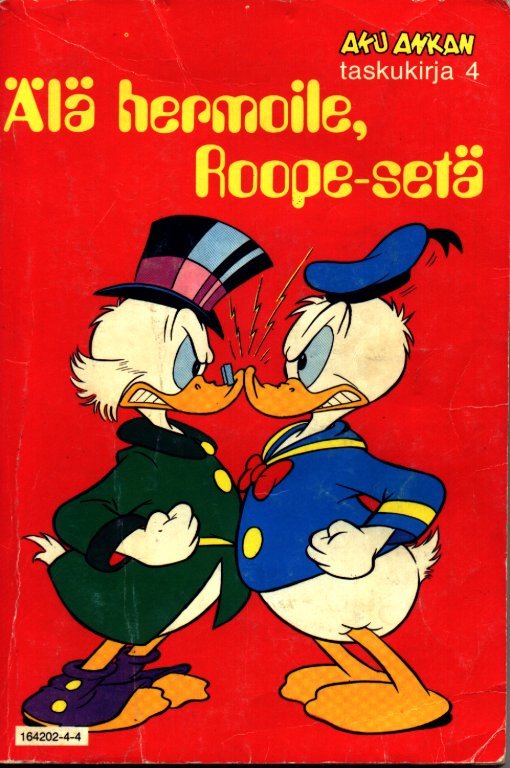
Books in series

Mikki kiipelissä
1970

Mikki ja viidakon vaarat
1970

Älä hermoile, Roope-setä
1970
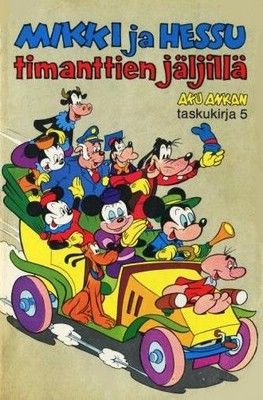
Mikki ja Hessu timanttien jäljillä
1971
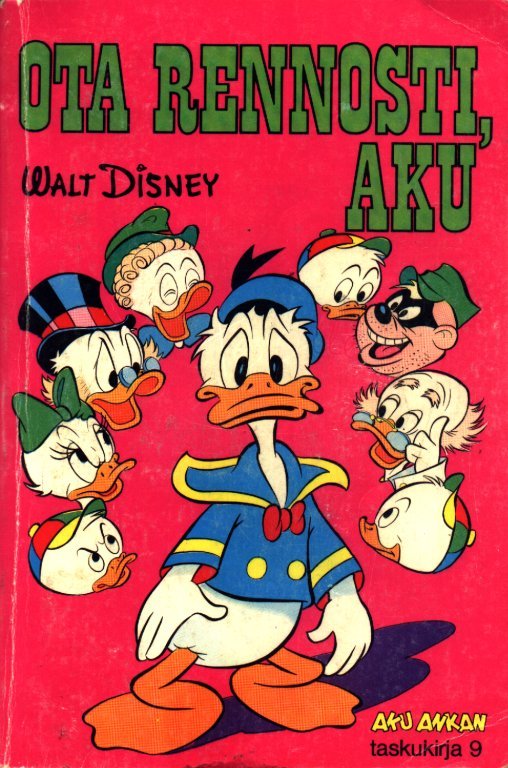
Ota rennosti, Aku
1972

Roope näkee punaista
1972
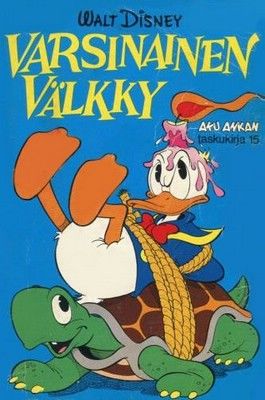
Varsinainen välkky
1973
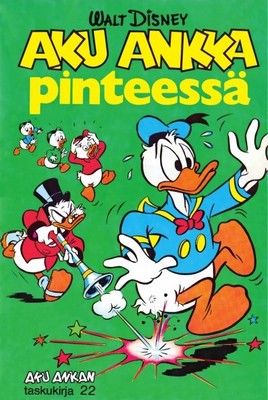
Aku Ankka pinteessä
2025
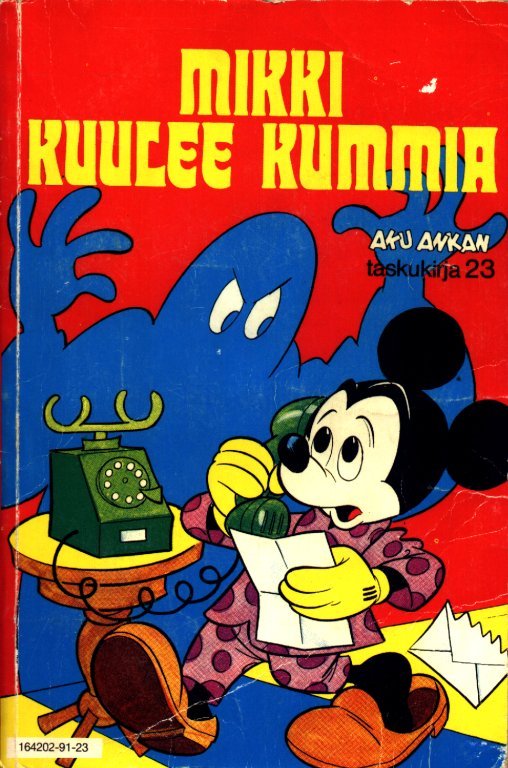
Mikki kuulee kummia
1975
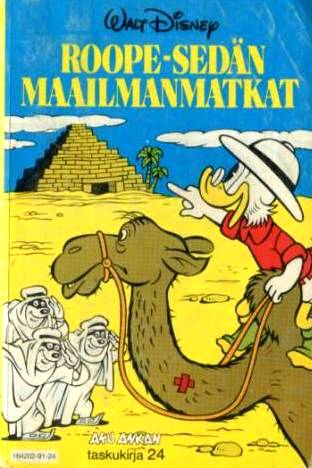
Roope-sedän maailmanmatkat
1975
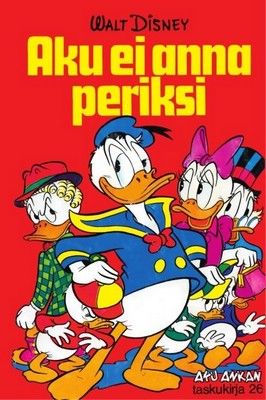
Aku ei anna periksi
1975
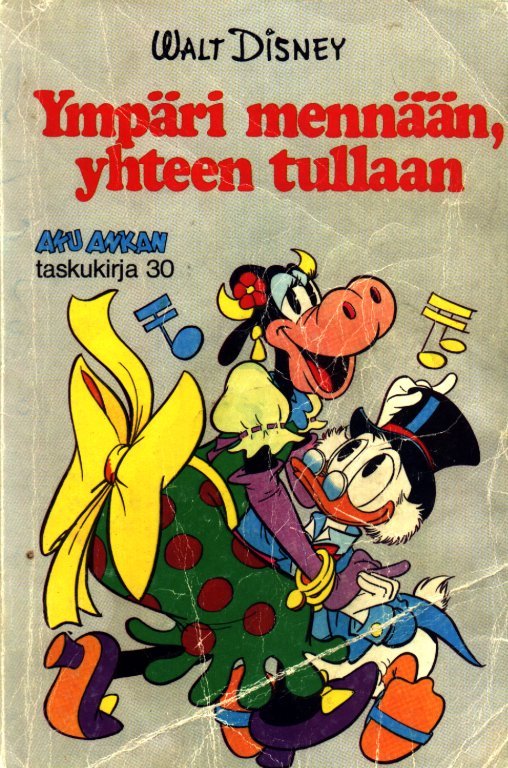
Ympäri mennään, yhteen tullaan
1976
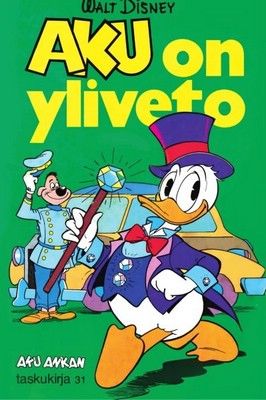
Aku on yliveto
1976

Onnenpoika Aku Ankka
1976
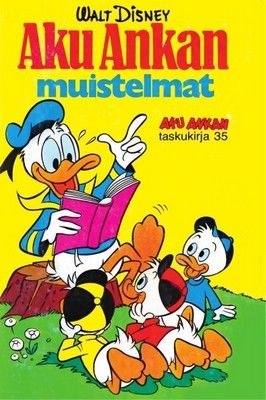
Aku Ankan muistelmat
1977

Roope ja Kroisos kilpasilla
1977

Varo velhoja, Roope-setä
1978

Aku Taikaviitta
1976
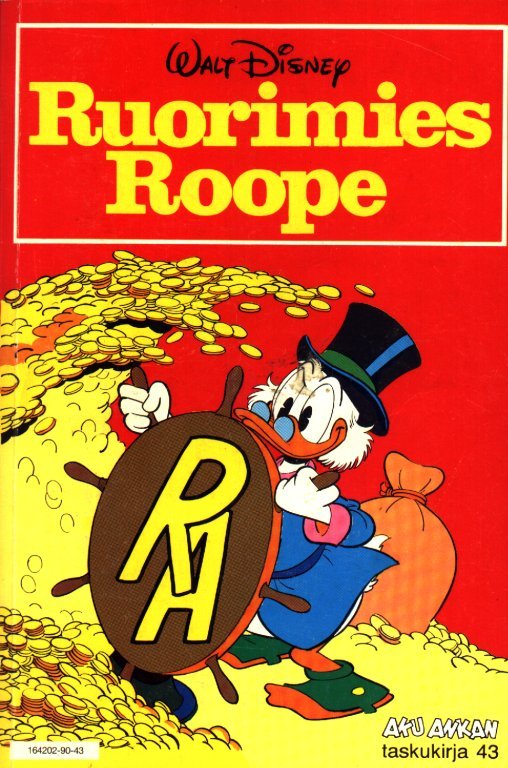
Ruorimies Roope
1979
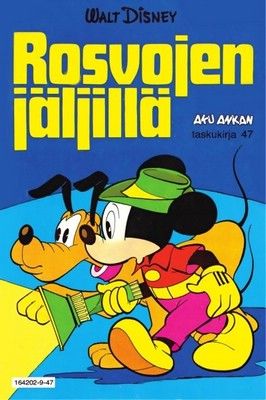
Rosvojen jäljillä
1979
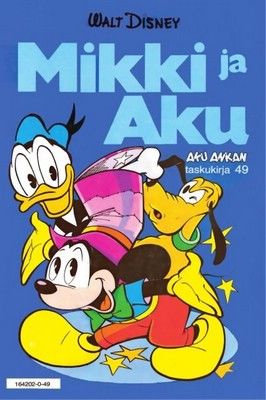
Mikki ja Aku
1980

Pää pystyyn, Aku Ankka
1980
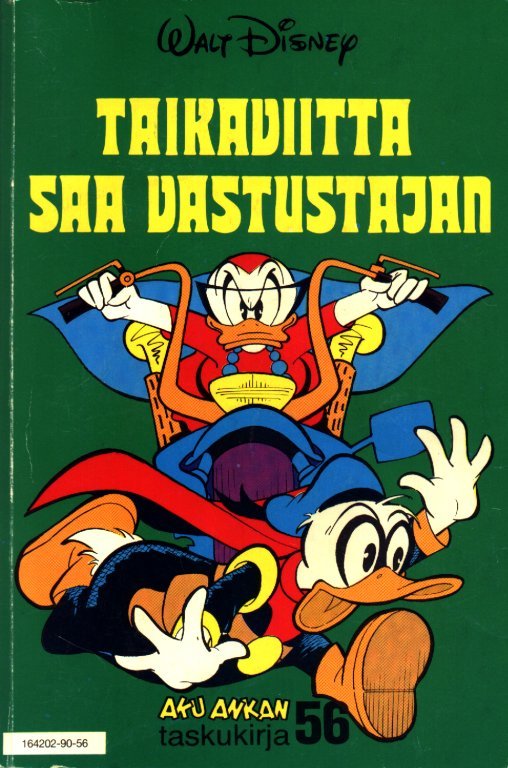
Taikaviitta saa vastustajan
1981
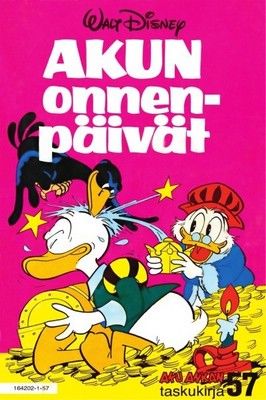
Akun onnenpäivät
1981

Puuhapari Mikki ja Minni
1982
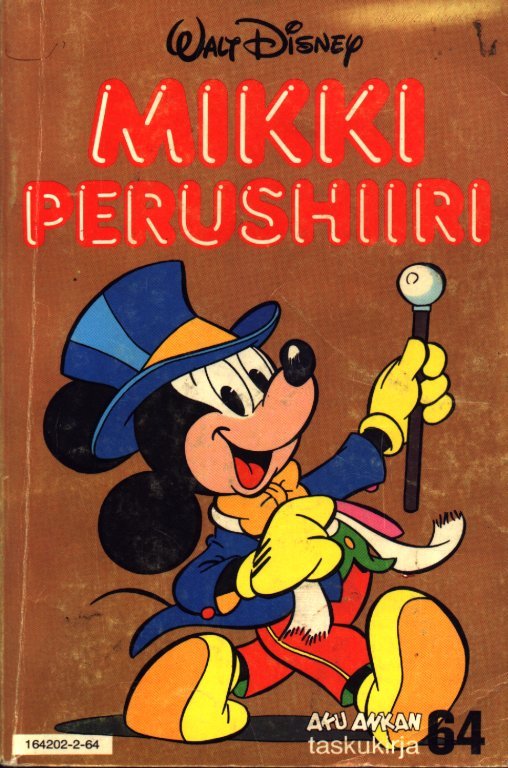
Mikki Perushiiri
1982
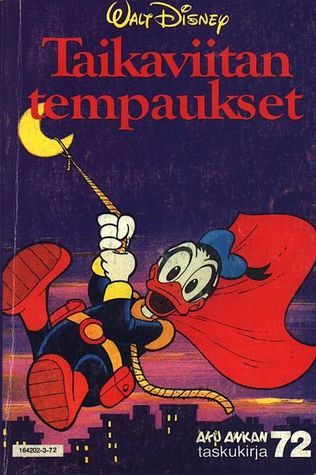
Taikaviitan tempaukset
1983
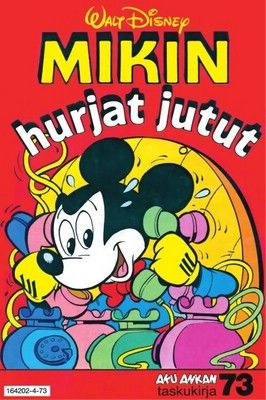
Mikin hurjat jutut
1984

Akun banaanipotku
1984
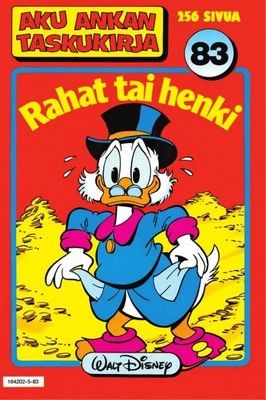
Rahat tai henki
1985

Mikin kuulento
1986
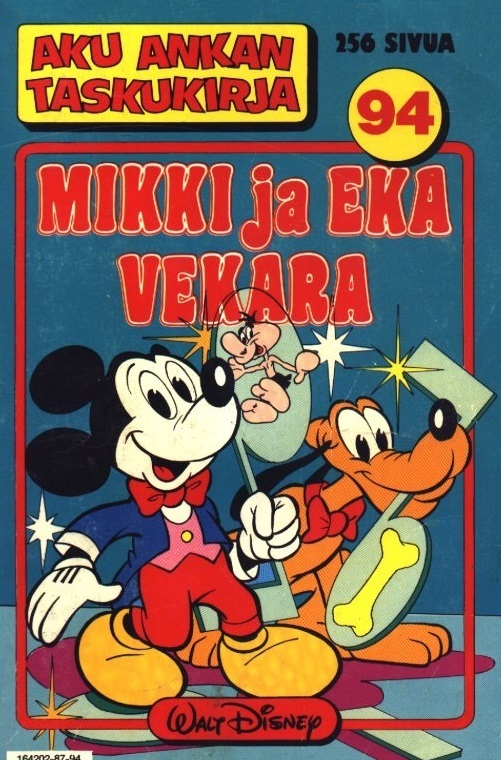
Mikki ja Eka Vekara
1987
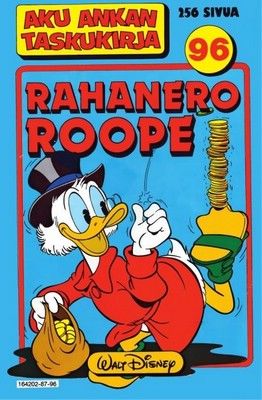
Rahanero Roope
1987
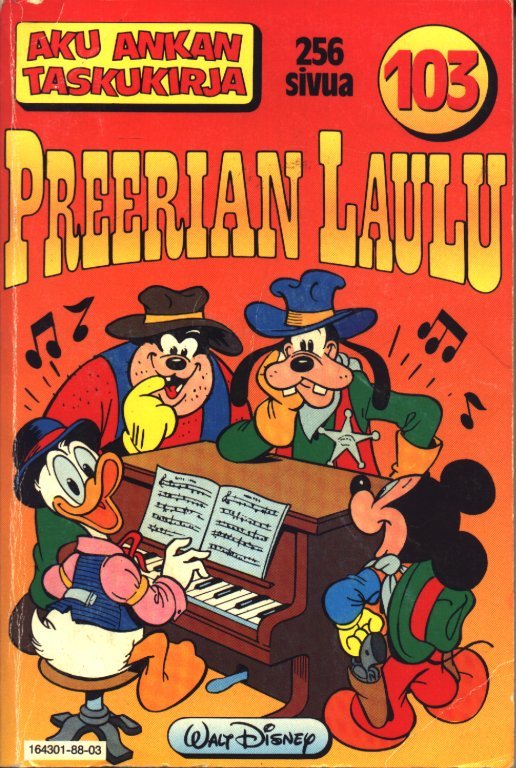
Preerian laulu
1988
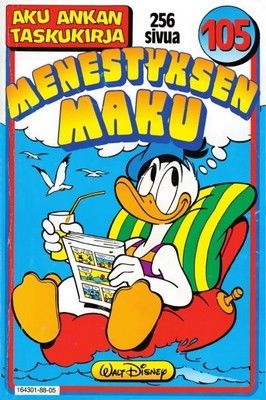
Menestyksen maku
1988

Roope ajaa täysillä!
1989
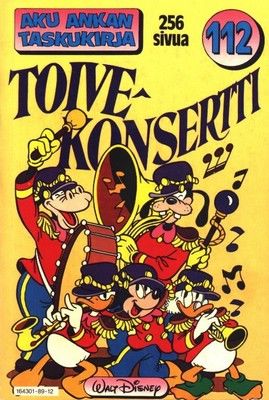
Toivekonsertti
1989

Juhlaparaati
1989
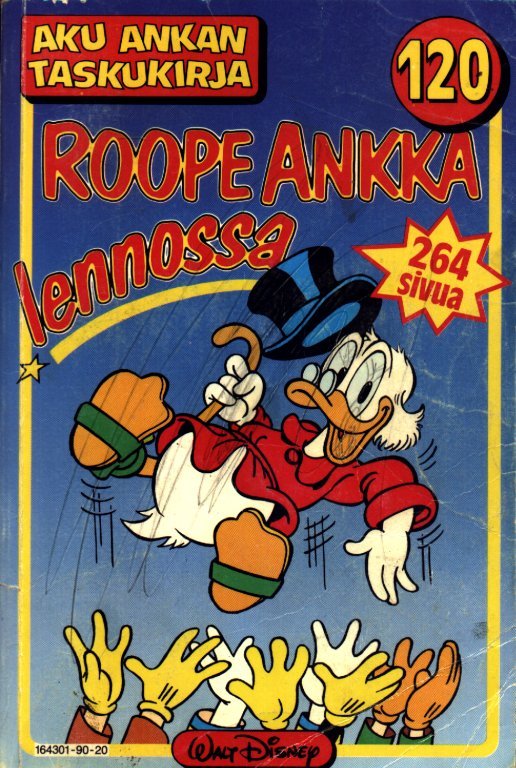
Roope Ankka lennossa
1990
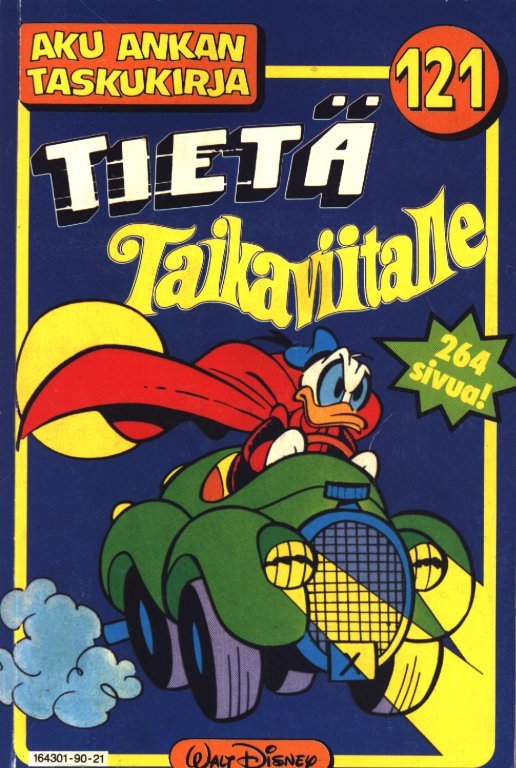
Tietä Taikaviitalle
1990

Rahasade ei kastele
1990

Mikistä on moneksi!
1990
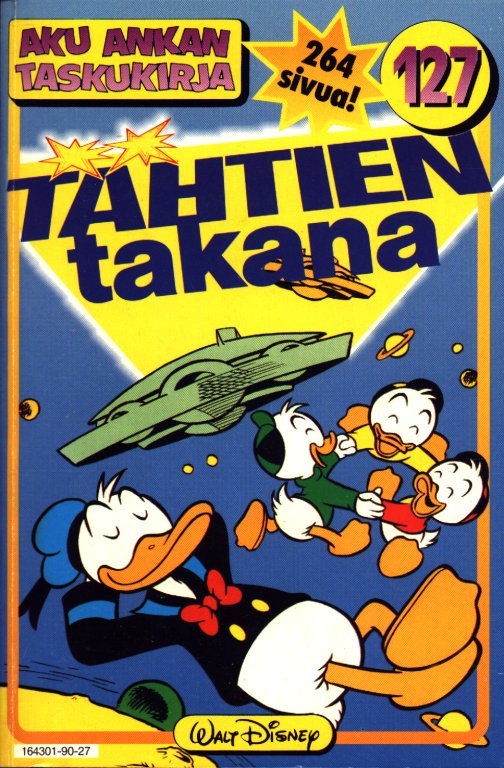
Tähtien takana
1990

Pahemmassa kuin pulassa
1991
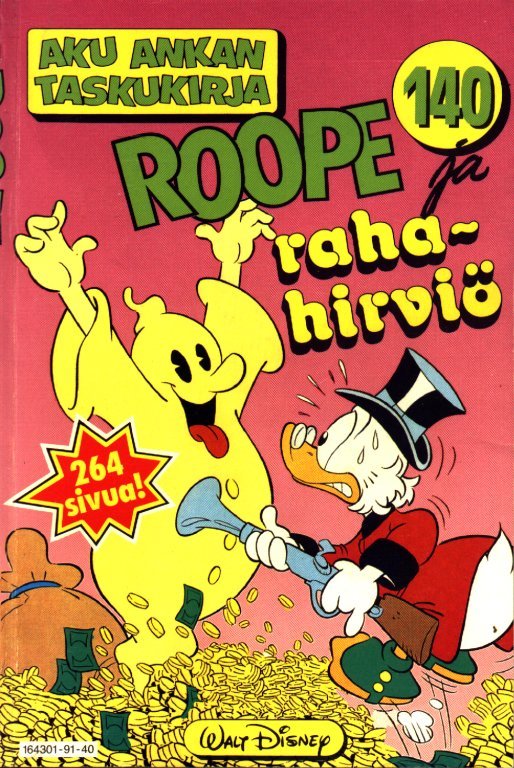
Roope ja rahahirviö
1991
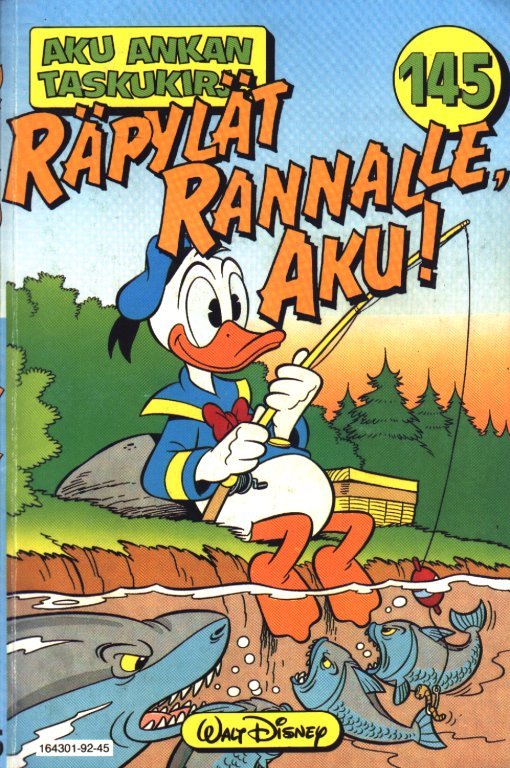
Räpylät rannalle, Aku!
1992
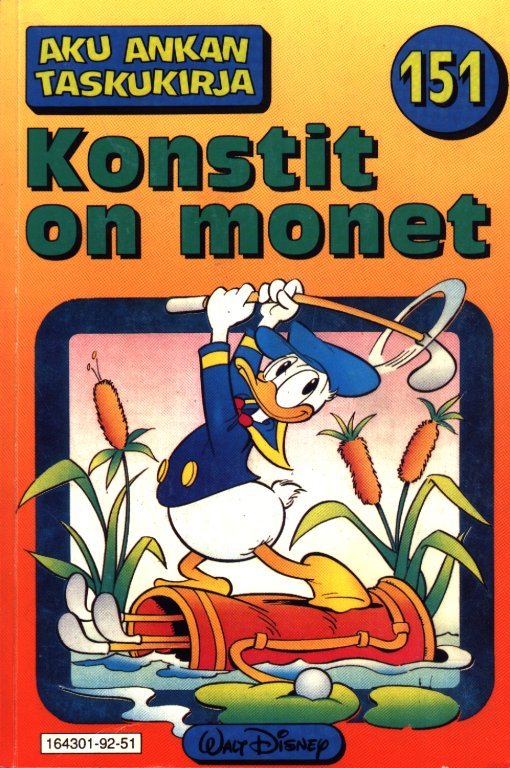
Konstit on monet
1992
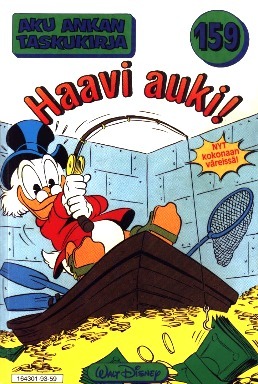
Haavi auki!
1993
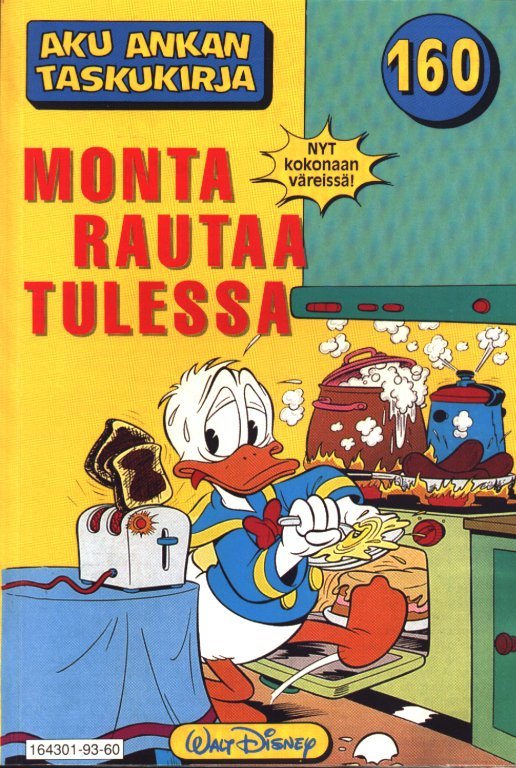
Monta rautaa tulessa
1993

Talttumaton Taikaviitta
1993

Lähdetään lätkimään
1994
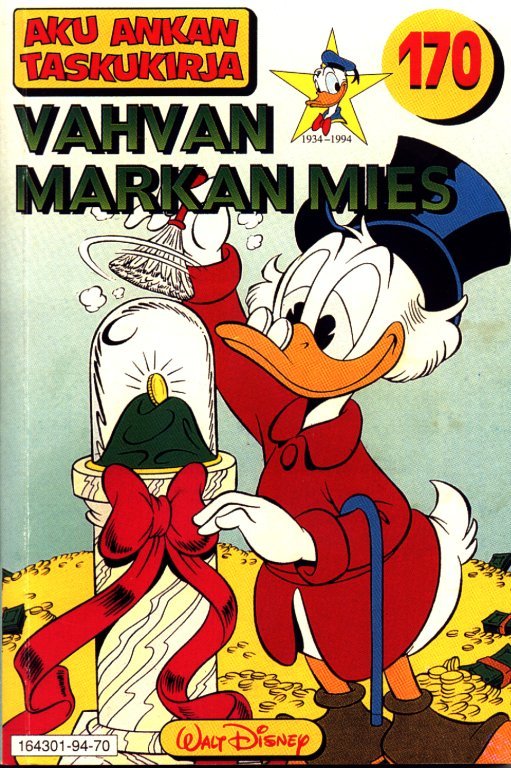
Vahvan markan mies
1994
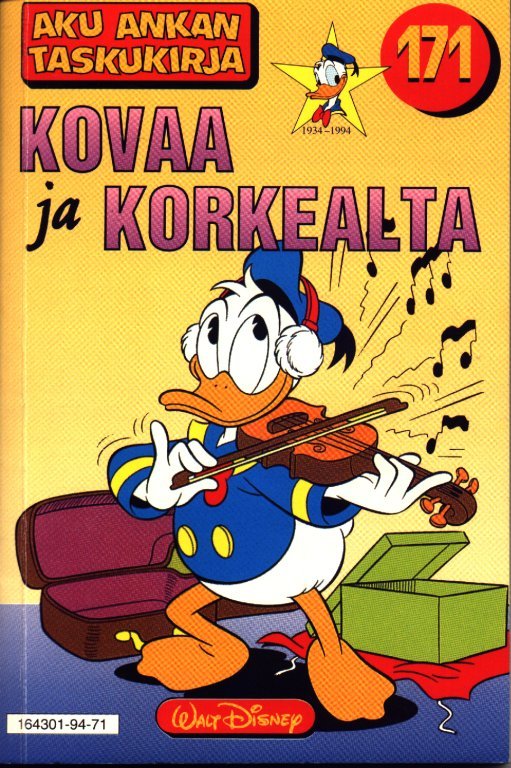
Kovaa ja korkealta
1994

Säästölinjalla
1994
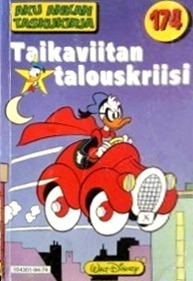
Taikaviitan talouskriisi
1994

Juhlan paikka
1994
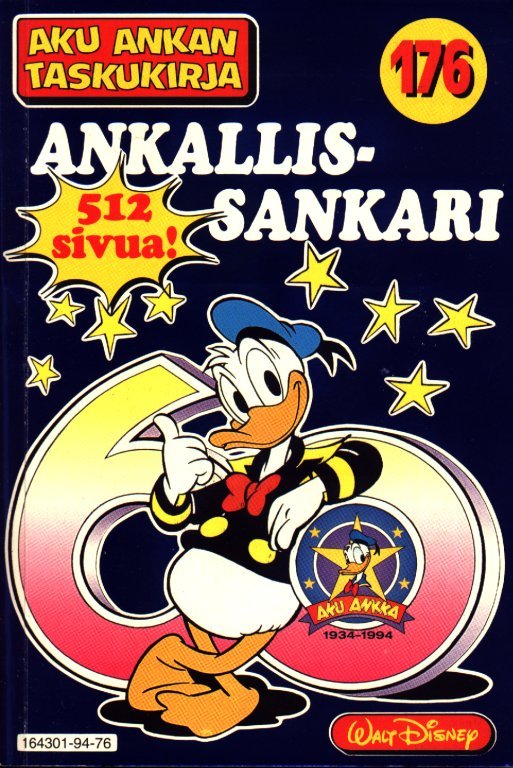
Ankallissankari
1994
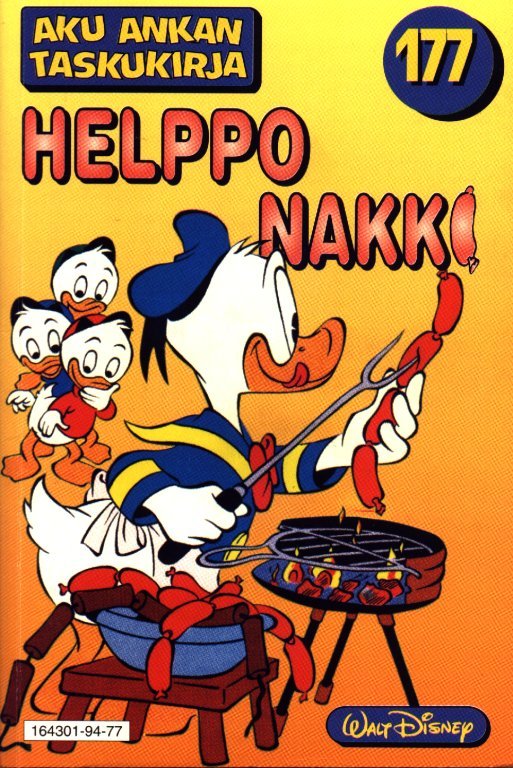
Helppo nakki
1994
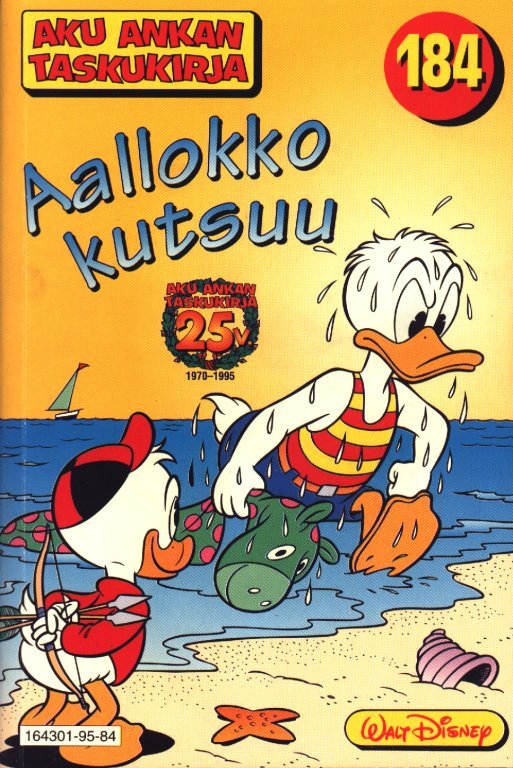
Aallokko kutsuu
1995

Ankkaenergiaa
1995
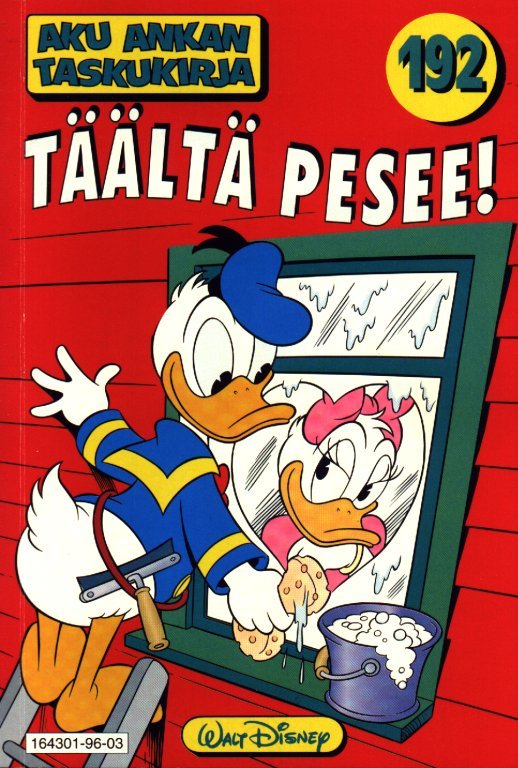
Täältä pesee!
1996
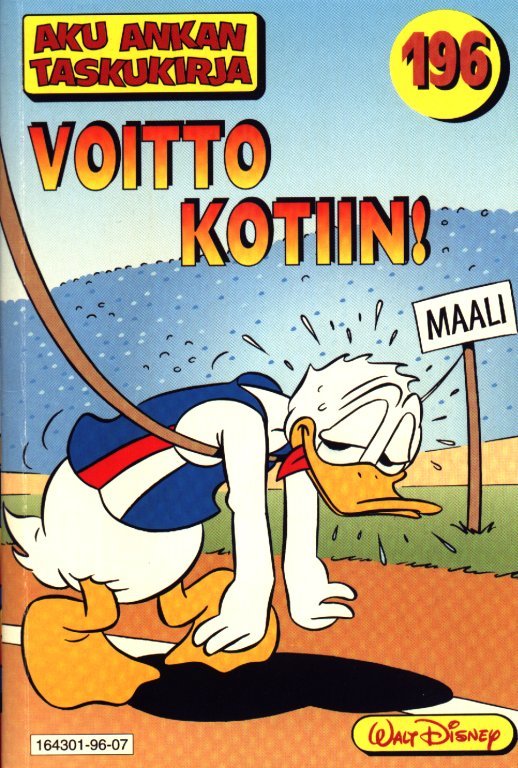
Voitto kotiin!
1996
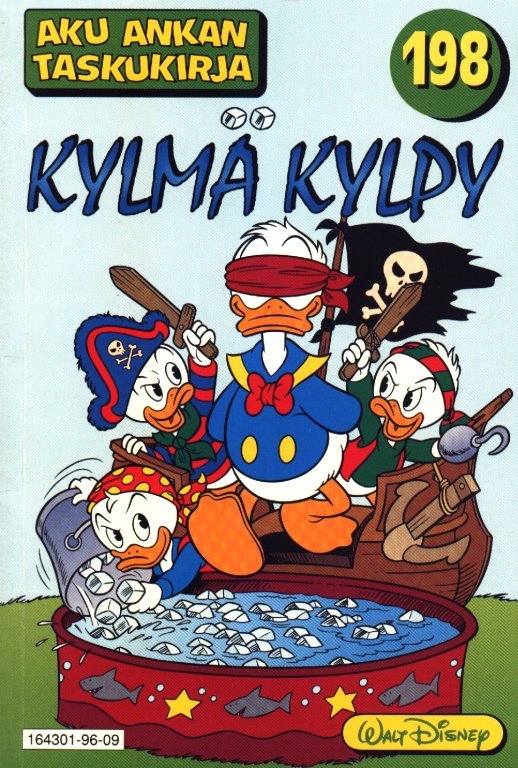
Kylmä kylpy
1996
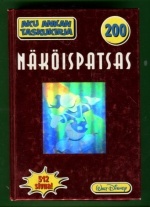
Näköispatsas
1996

Salaiset kansiot
1996
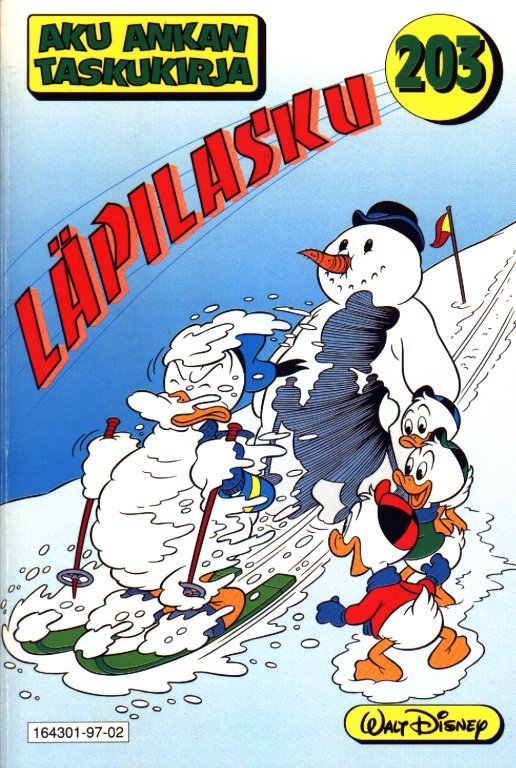
Läpilasku
1997
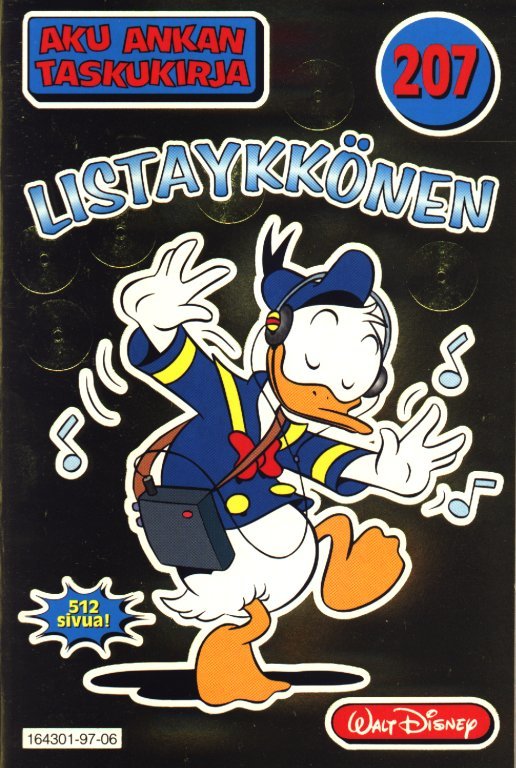
Listaykkönen
1997
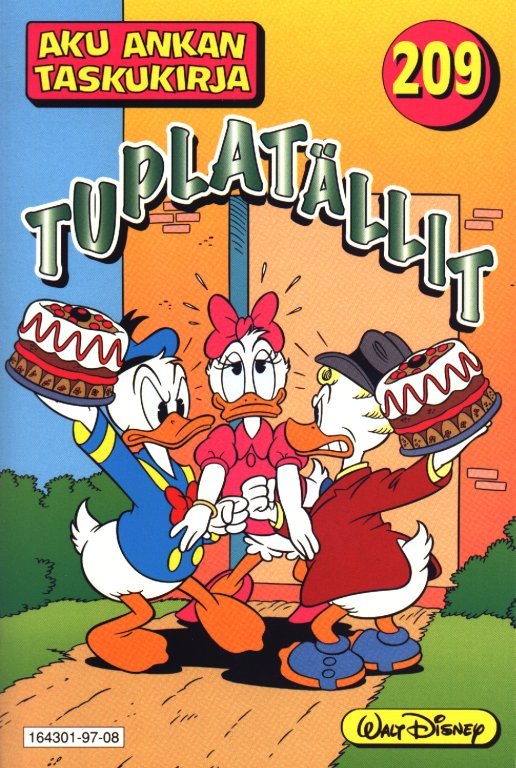
Tuplatällit
1997
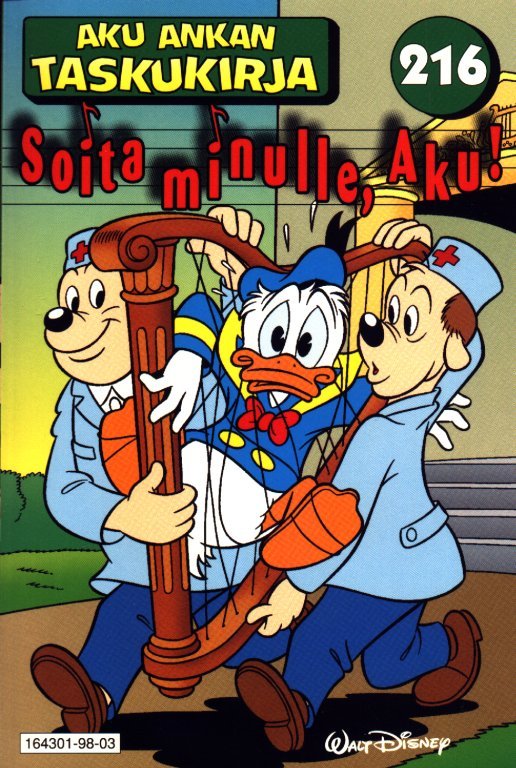
Soita minulle, Aku!
1998

Die Zeitwanne
1996

Donald Duck Pocket 224
De opstand van de tekstblokjes
1998
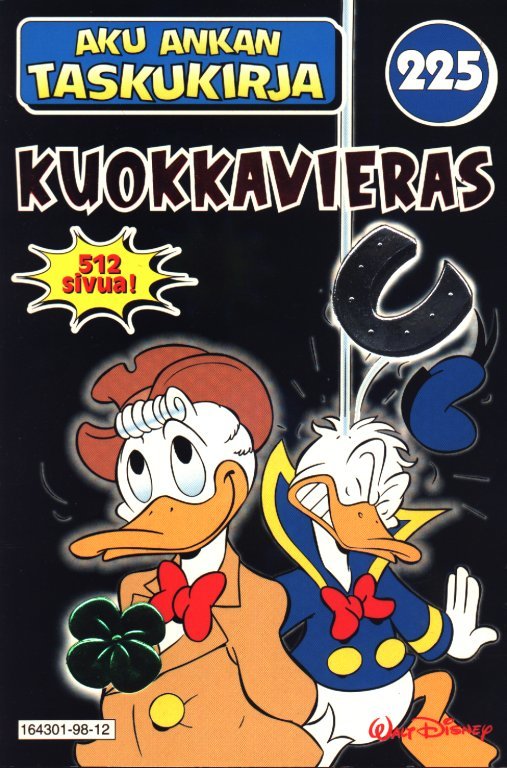
Kuokkavieras
1998
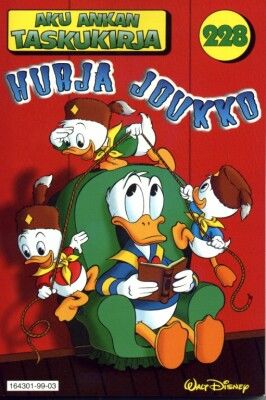
Hurja joukko
1999
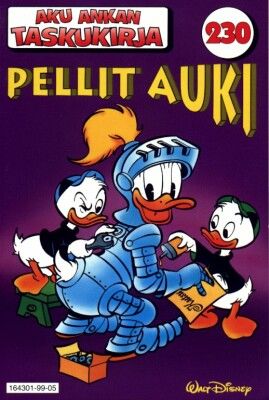
Pellit auki
1999

Kesätoimittaja
1999
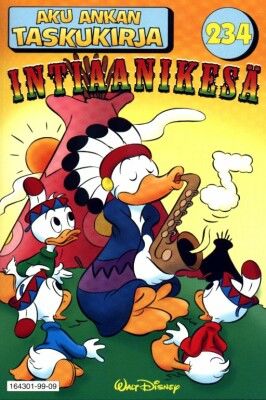
Intiaanikesä
1999
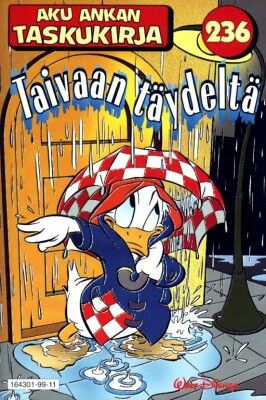
Taivaan täydeltä
1999
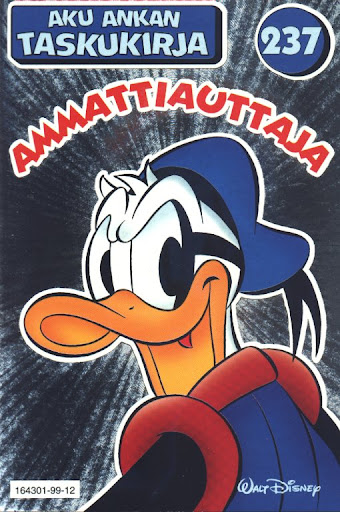
Ammattiauttaja
1999
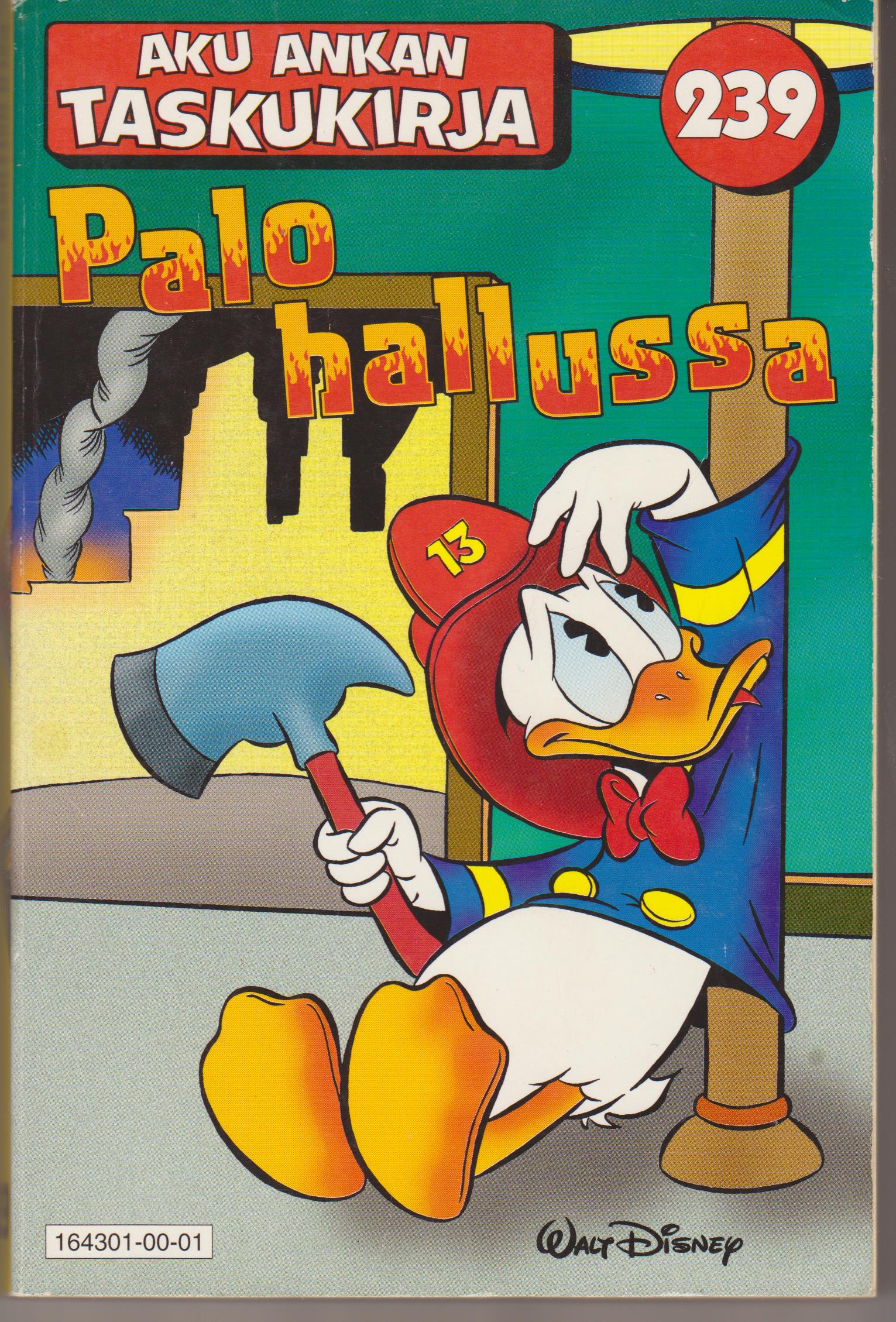
Palo hallussa
2000
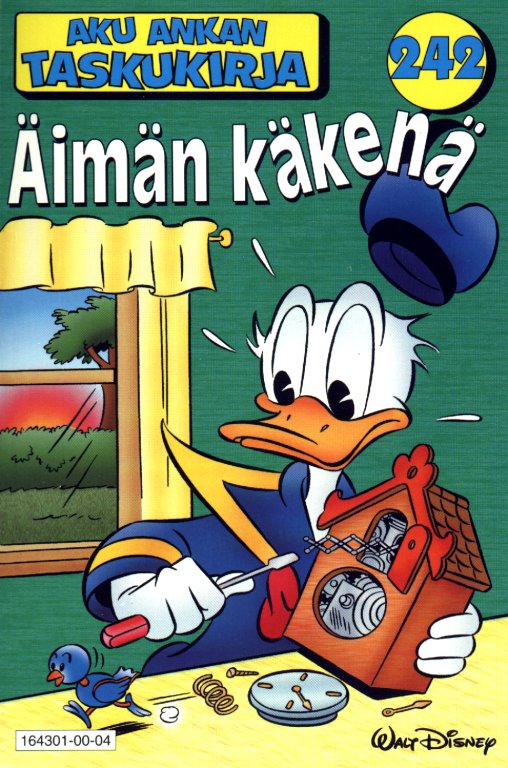
Äimän käkenä
2000
Terävä veto
2000
Hopeinen kuu
2000
Salaliitto
2000
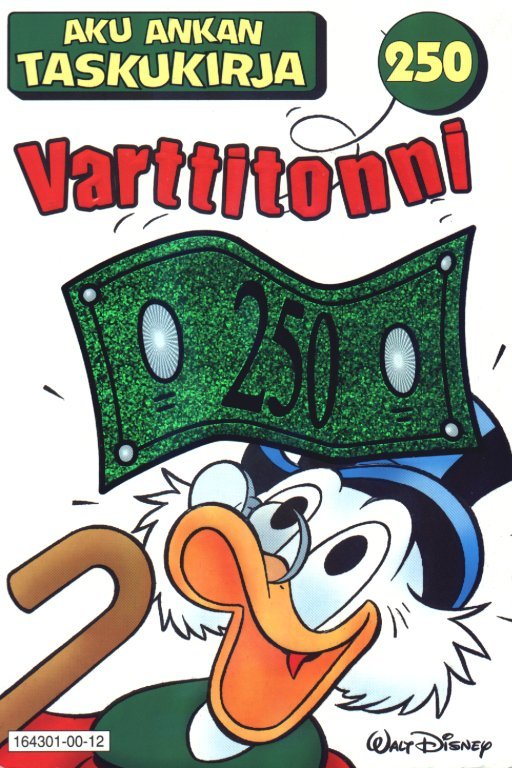
Varttitonni
2000
Hammaspeikko lannistuu
2000
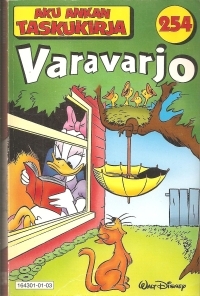
Varavarjo
2001
Yhtä kyytiä
2001

Taikaviitta kuilun partaalla
2001
Isojalan jäljlillä
2001
Julma huvi
2002
Kovaa valuuttaa
2002
Polttava ongelma
2002
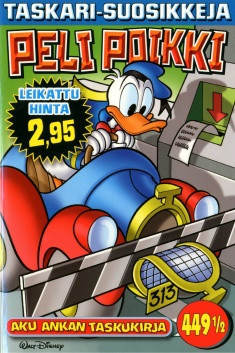
Peli poikki
2017
Kerran kuussa
2003
Uhmaikä (Aku Ankan taskukirja,
2003
Pikkujättiläinen
2003
Hui hai!
2003
Poikki ja pinoon
2003
Konille kyytiä
2004
Venyy ja paukkuu
2004
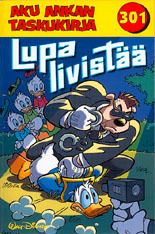
Lupa Livistää
2004
Ääni ja vimma
2004
Kaksin aina kaunihimpi
2005

Tähtien setä
2005
Tuhannen taalan paikka
2005
Asu vapaa
2006
Raha rauhoittaa
2006
Kalmanlehdon kartano
2006
Vanha uskollinen
2006

Nokkapokka
2007
Piraattipuisto
2007
Kuutamokeikka
2007
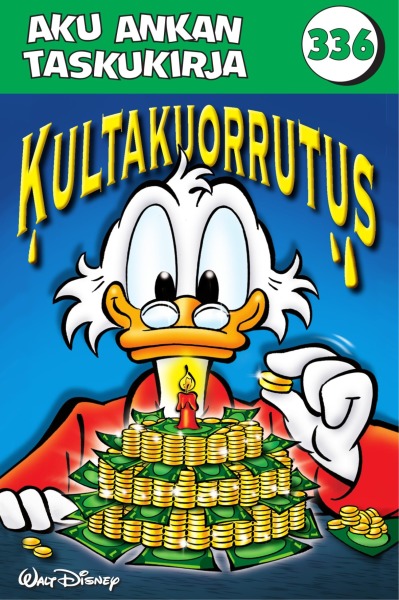
Kultakuorrutus
2007
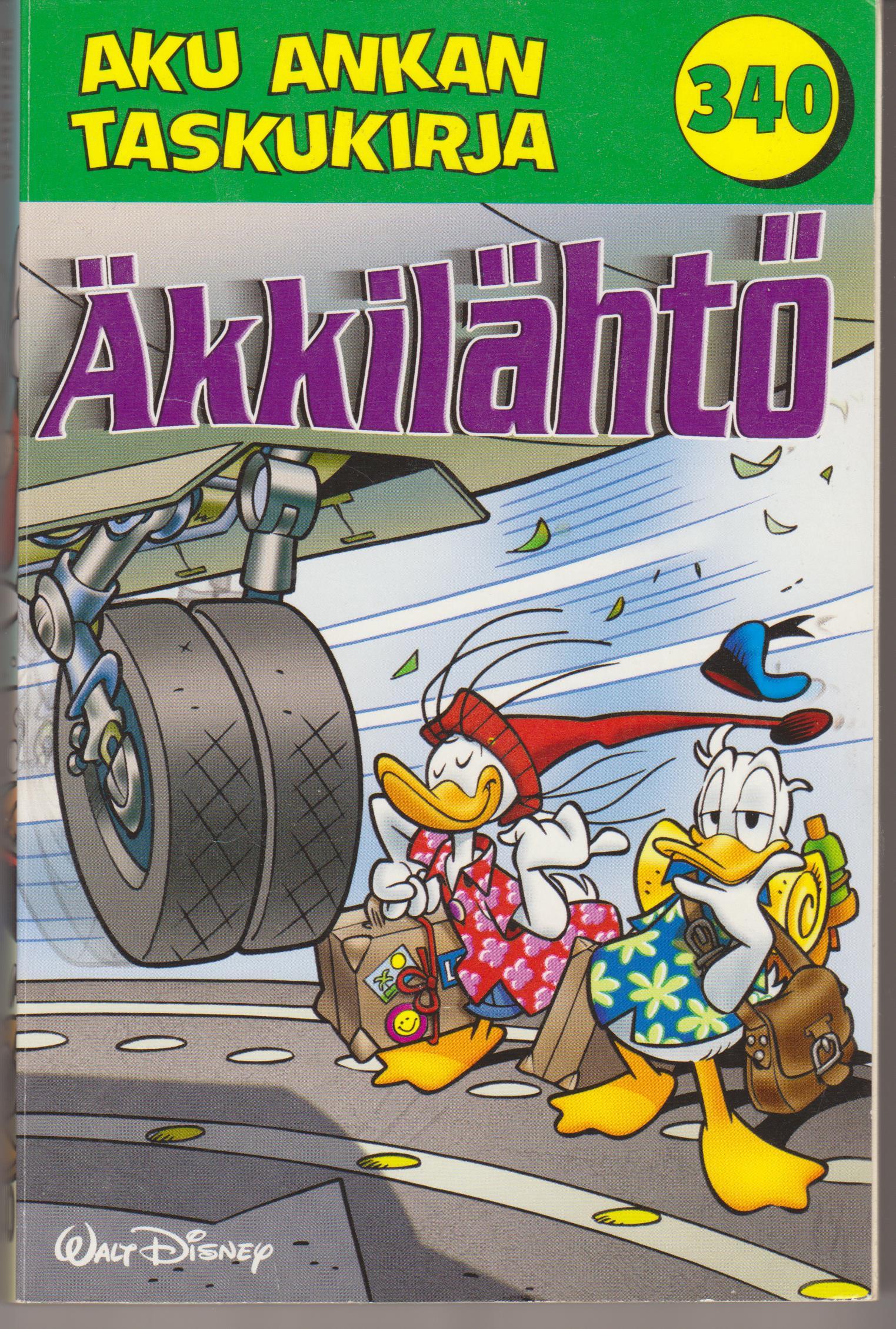
Äkkilähto
2008
Lantti lainassa
2008
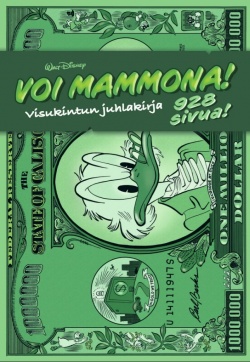
Voi mammona! - Visukintun juhlakirja
2022
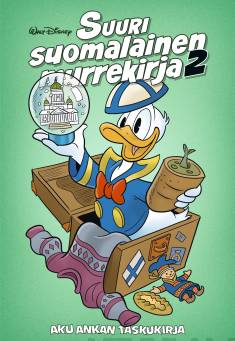
Suuri Suomalainen murrekirja 2
2022
Vuosisadan rakkaustarina
2009
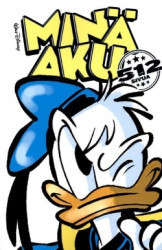
Minä Aku
2023

Ankkadynastia
Ankkojen suvun maine, kunnia ja suuret seikkailut
2023
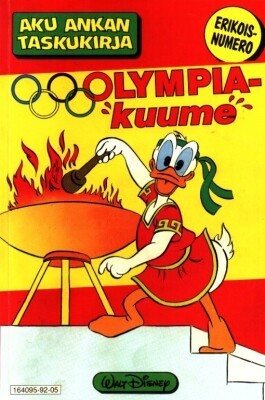
Olympiakuume
Aku Ankan Taskukirja Erikoisnumero
1988

Onnenonkija
2009
Pallo hallussa
2009

Lain kylmä koura - Taskarin talvijännäri
2013
Salattu elämä
2010

Kaikki pelissä
2010

Valiojoukko
2011
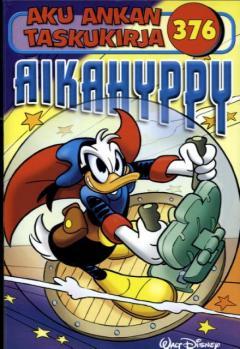
Aikahyppy
2011
Seitsemän meren kauhu
2011
Jättiyllätys
2011
Rahat mielessä
2011
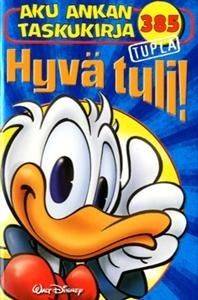
Hyvä tuli!
2012
Tuplanolla ja pelin säännöt
2012
Taidenautinto
2012

Kultakypärä
2012
Jäljillä
2012
Perhosvaikutus
2013

Neljäsataa
2013
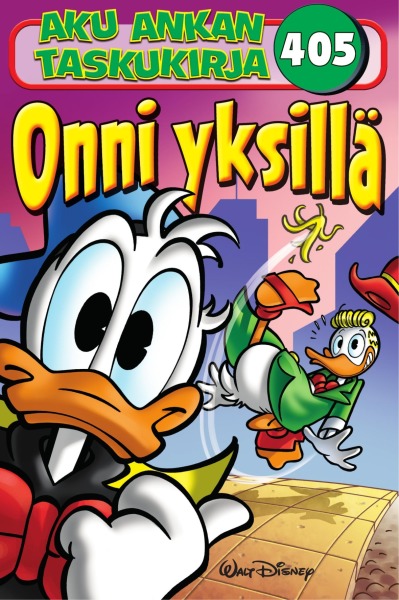
Onni yksillä
2013

Maltan Ankka
2013

Sormuksen narrit
2014
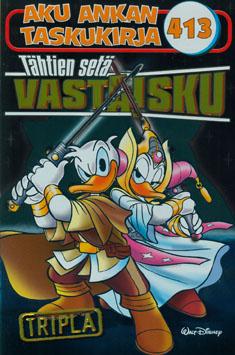
Tähtien setä
vastaisku
2014
Kitupiikin kesätyö
2014
Kipparitrio
2014
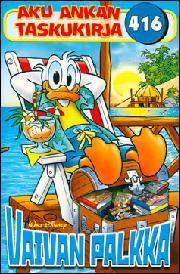
Vaivan palkka
2014
Nokittaja
2014
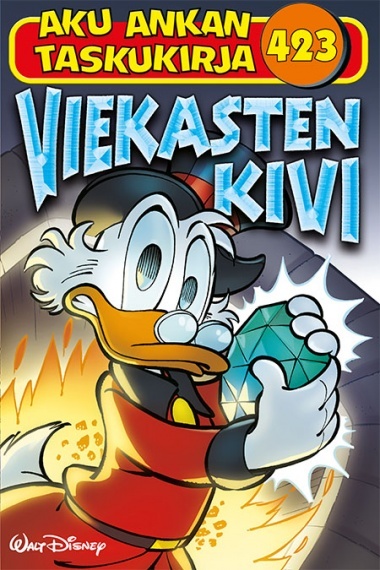
Viekasten kivi
2015
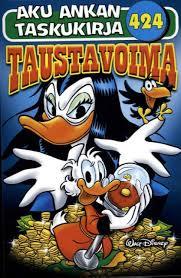
Taustavoima
2015
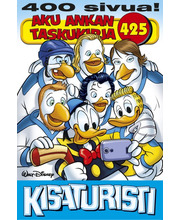
Kisaturisti
2015
Aina tiellä
2015
Myrskyvaroitus
2015

Loma paketissa
2015
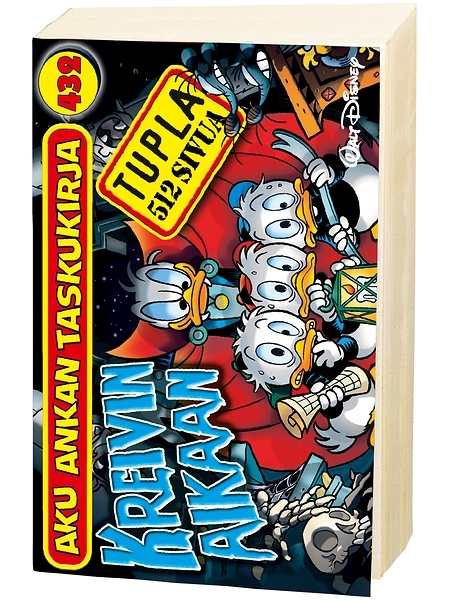
Kreivin aikaan
2015
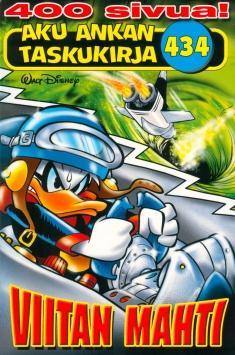
Viitan mahti
2015
Kultakylpy
2016
Uimamaisteri
2016
Rio, ohoi!
2016
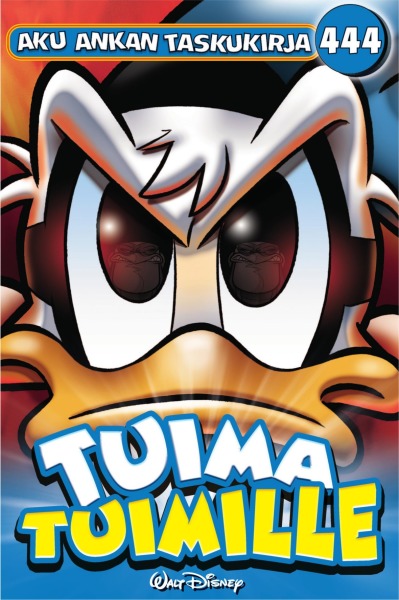
Tuima tuimille
2016
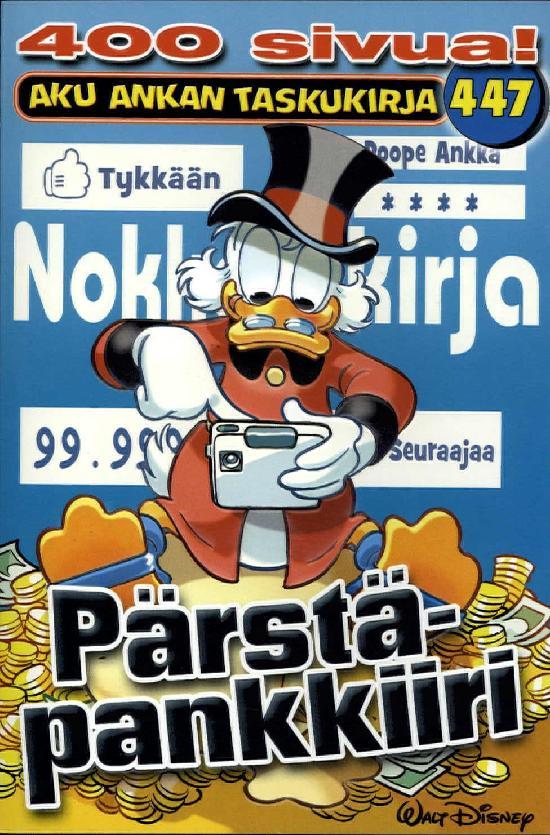
Pärstäpankkiiri
2016
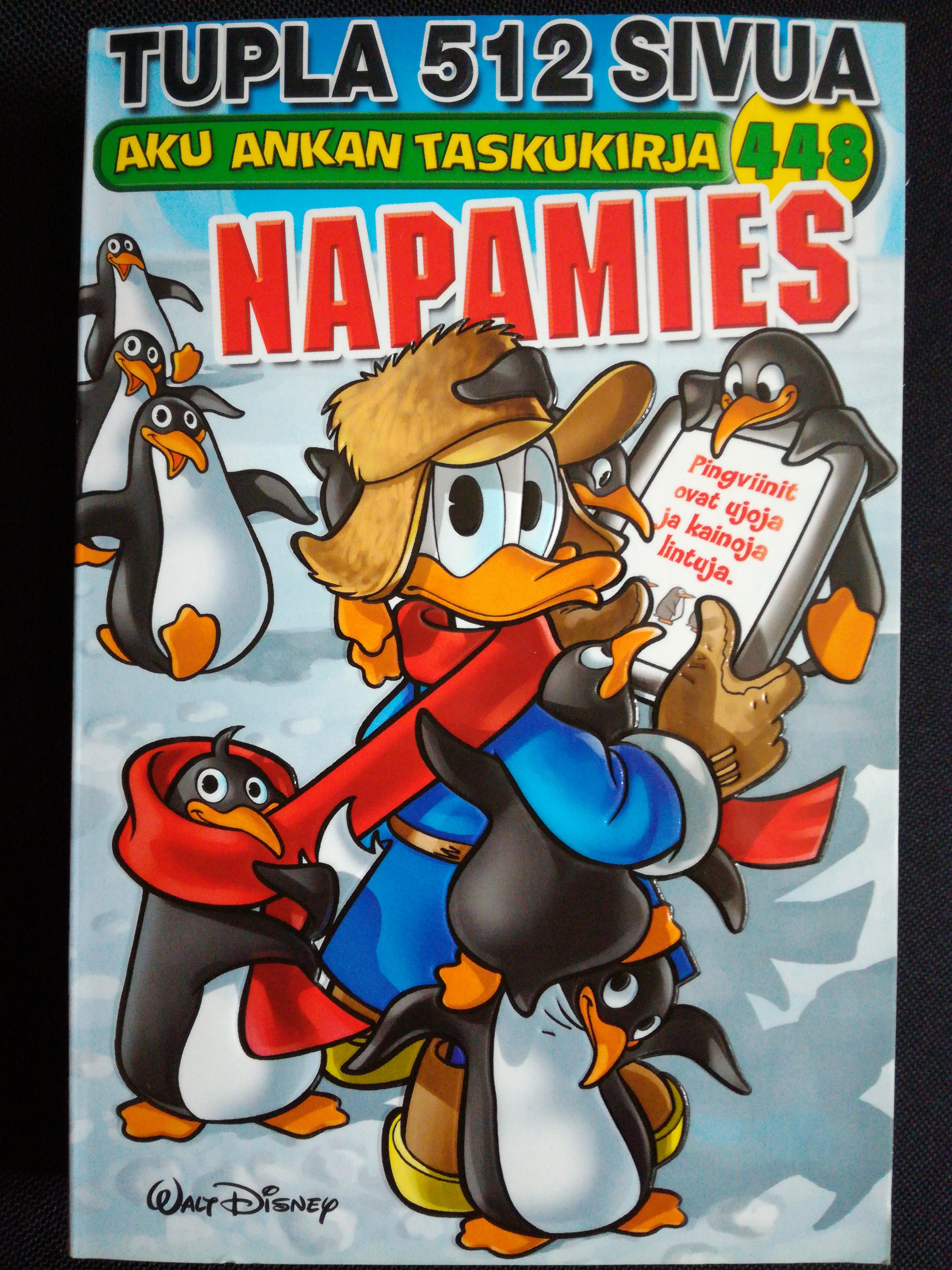
Napamies
2017
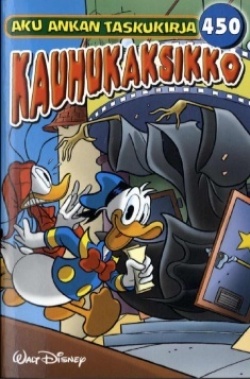
Kauhukaksikko
2017

Reissumies
2017
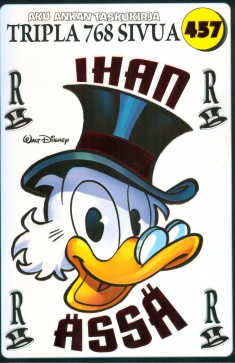
Ihan ässä
2017
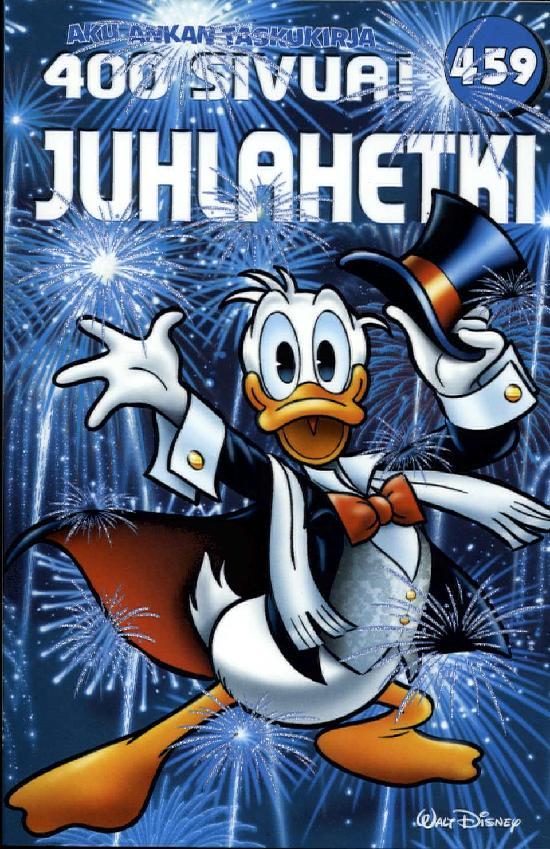
Juhlahetki
2017
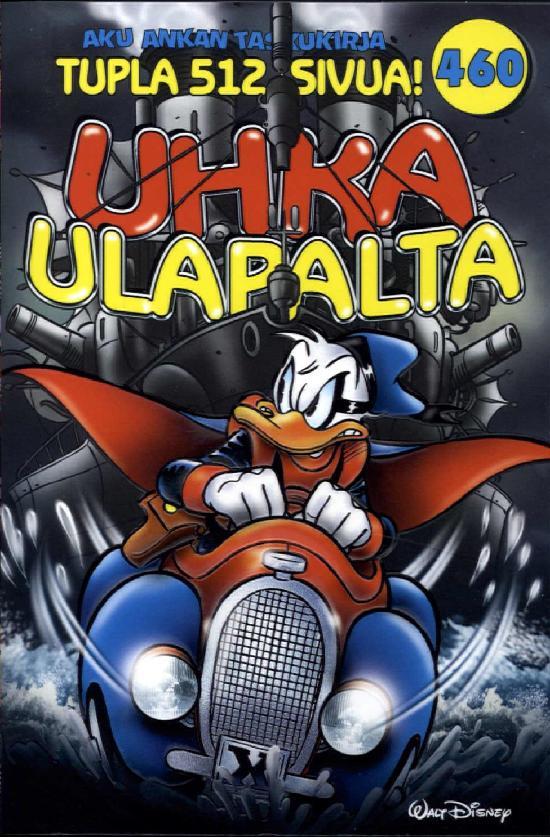
Uhka ulapalta
2018
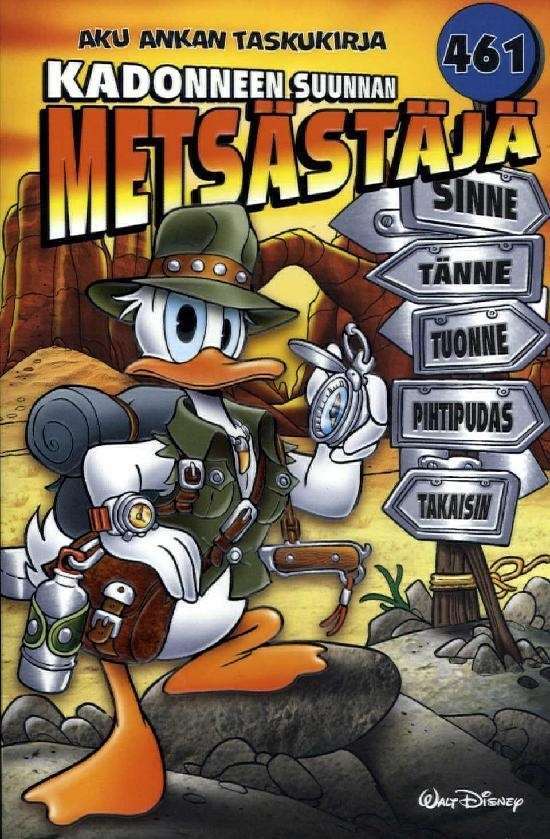
Kadonneen suunnan metsästäjä
2017
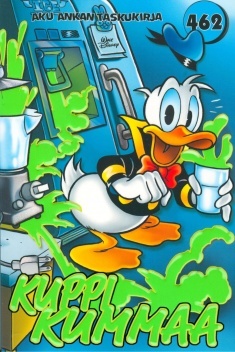
Kuppi kummaa
2018
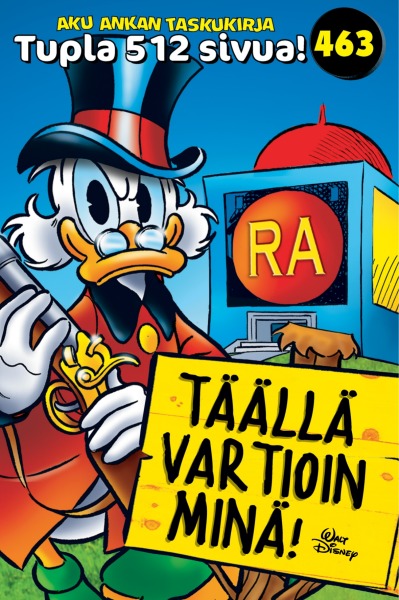
Täällä vartioin minä!
2018
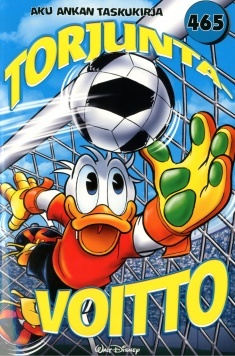
Torjuntavoitto
2018
Kuha on hai
2018
Muumion kosto
2018

Laboratorion noutaja
2018
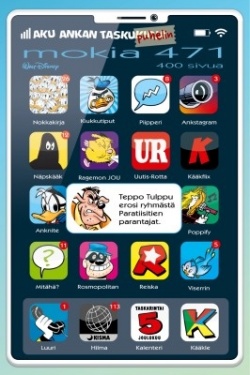
Mokia 471
2018
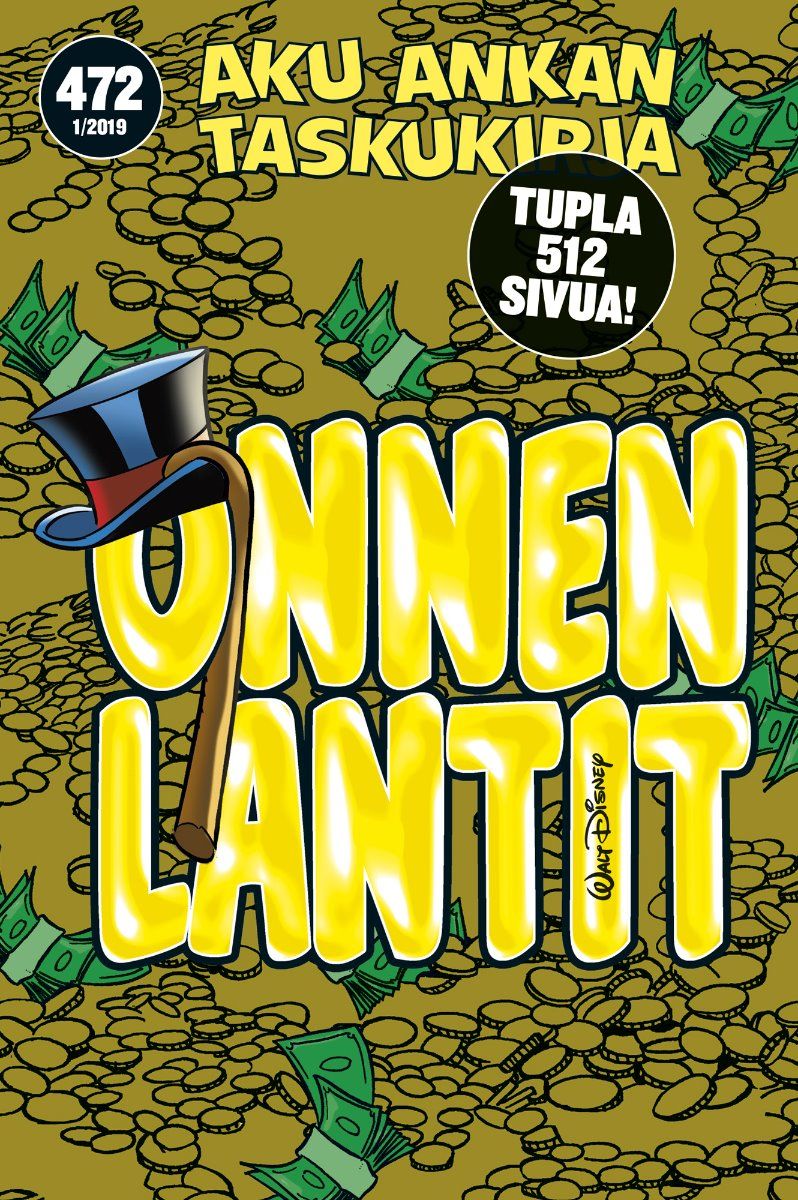
Onnen lantit
2019
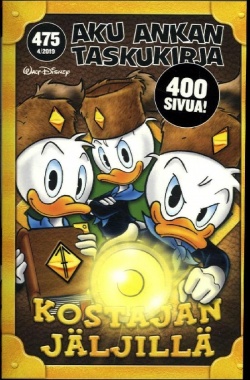
Kostajan jäljillä (Aku Ankan taskukirja, #475
2019
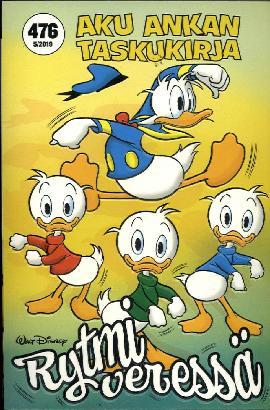
Rytmi veressä
2019
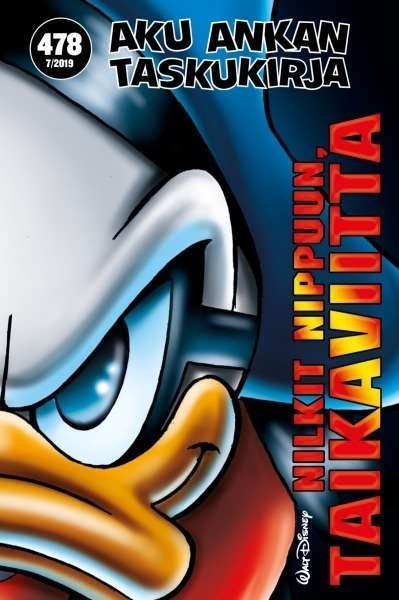
Nilkit nippuun, Taikaviitta
2019

Titaanien taistelu
2019
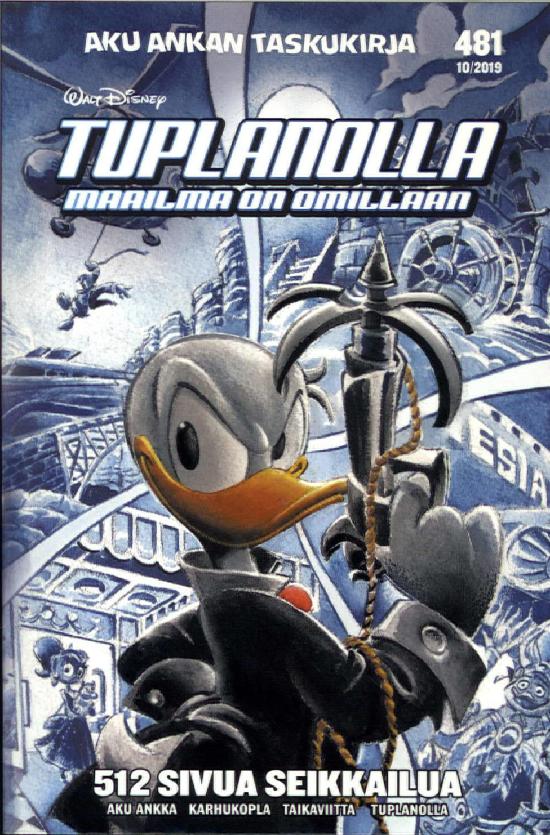
Tuplanolla
Maailma on omillaan
2019
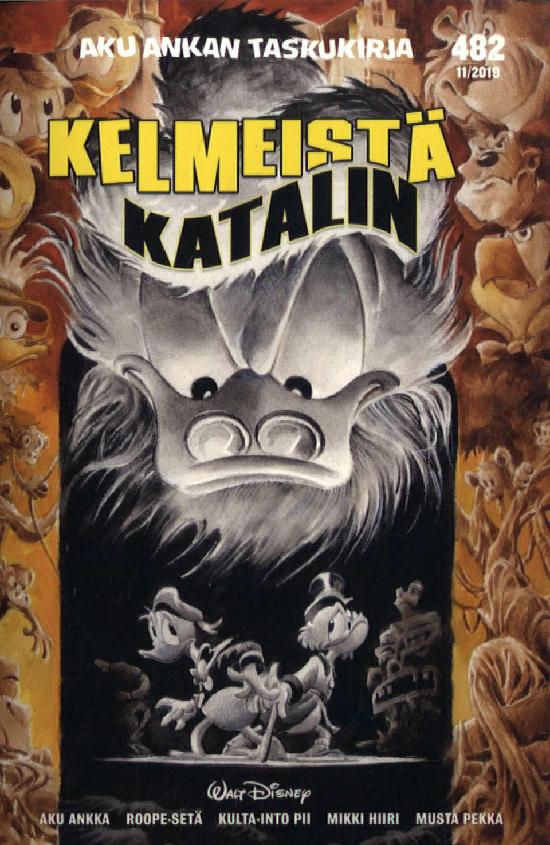
Kelmeistä katalin
2019
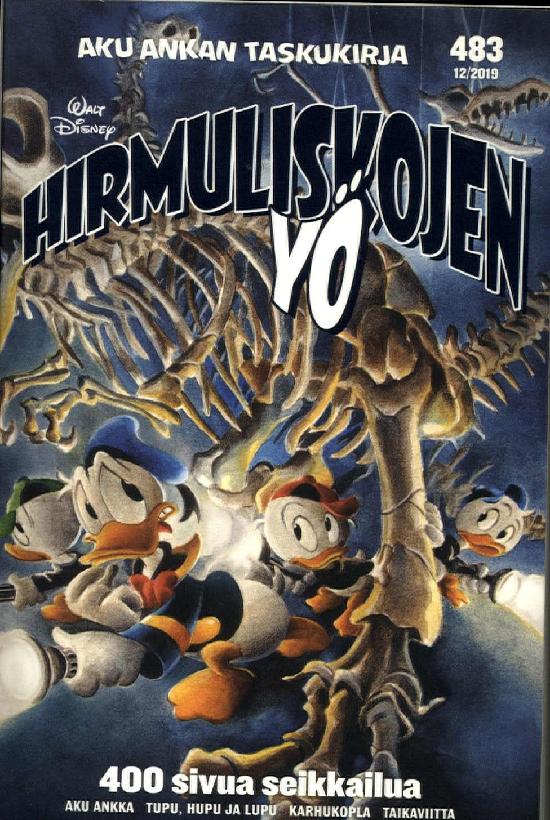
Hirmuliskojen yö
2019

Tuhon temppeli
2019

Valhallan vaara
2020

Miljoonasade
2020
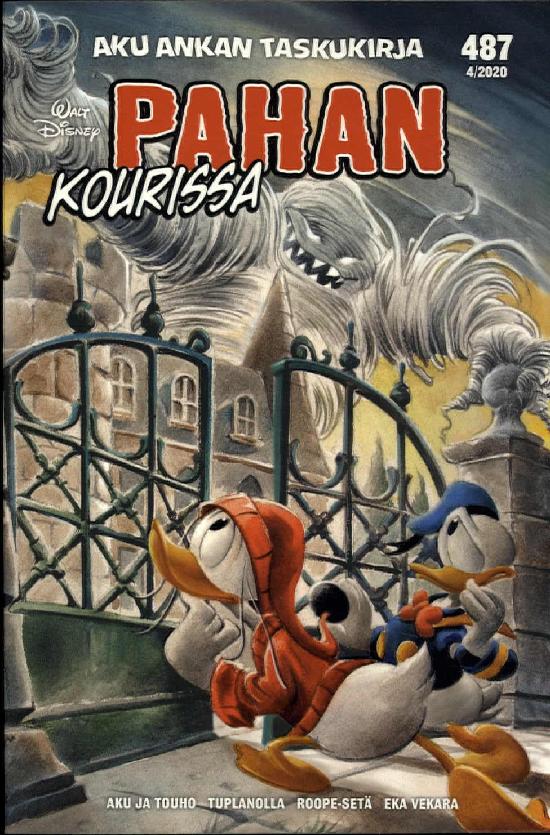
Pahan kourissa
2020
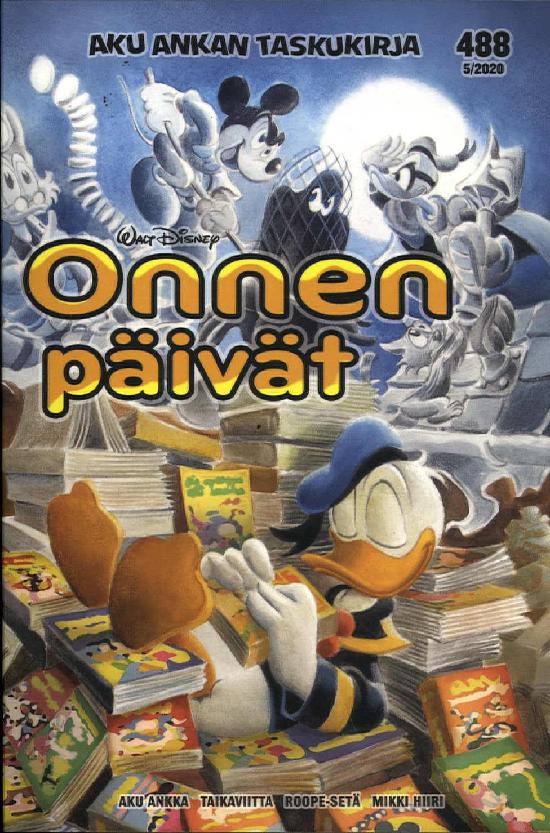
Onnen päivät
2020

Löylynlyömät
2020

Korpikuoro
2020
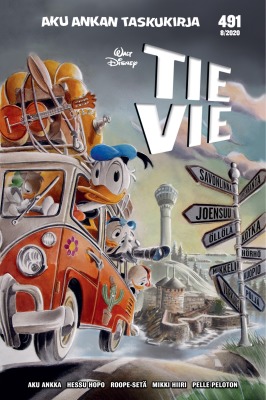
Tie vie
2020
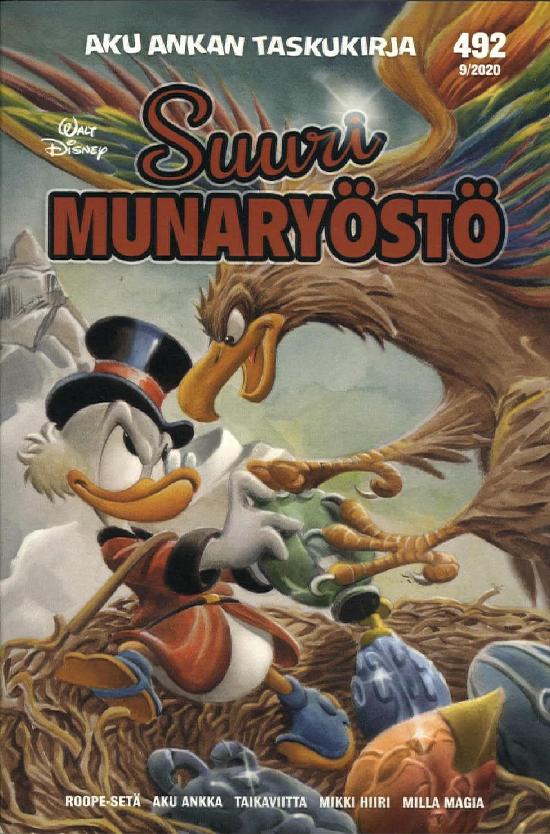
Suuri munaryöstö
2020
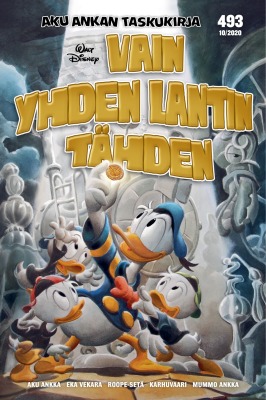
Vain yhden lantin tähden
2020
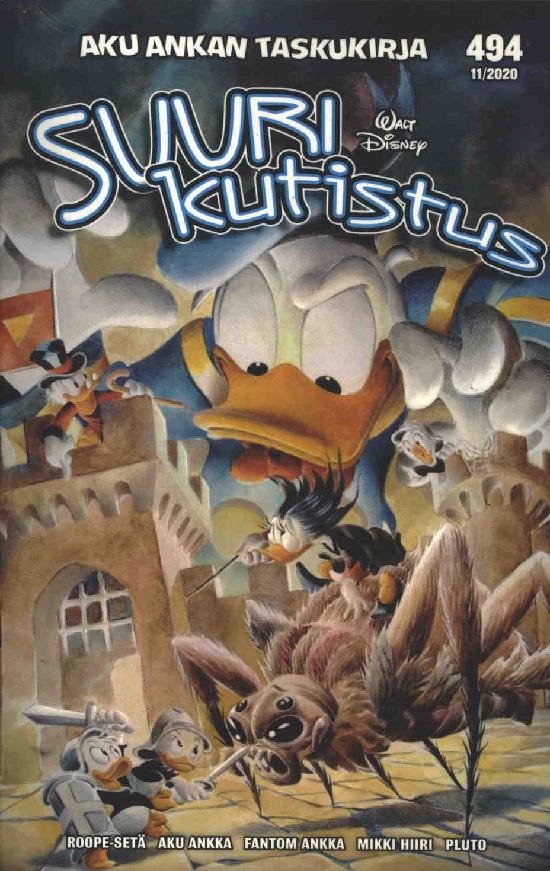
Suuri kutistus
2020
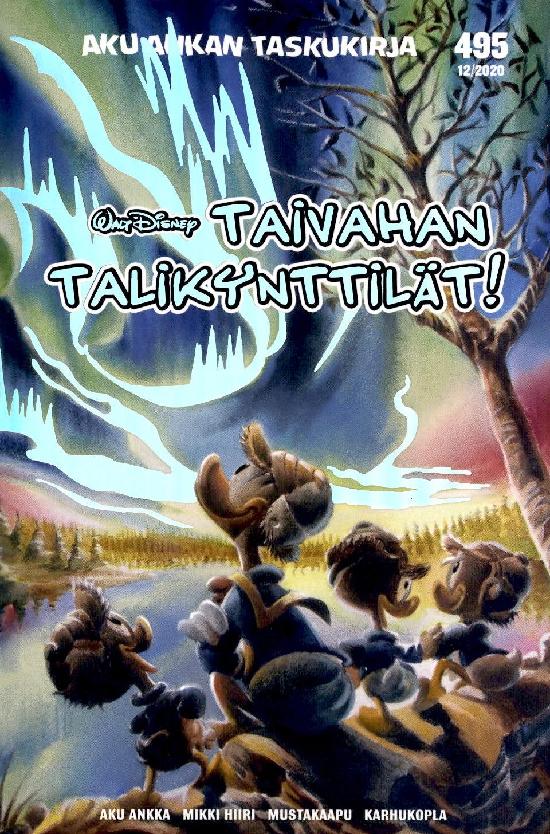
Taivahan talikynttilät!
2020
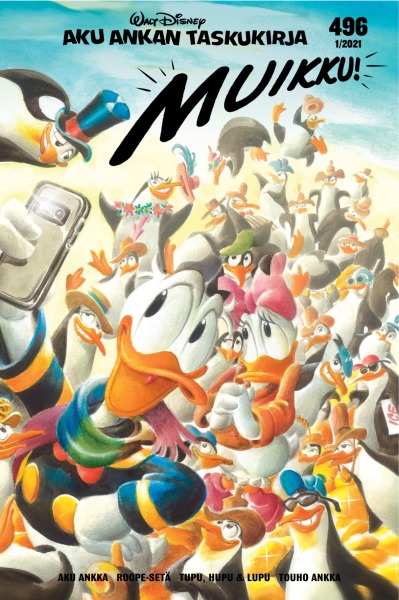
Muikku!
2021
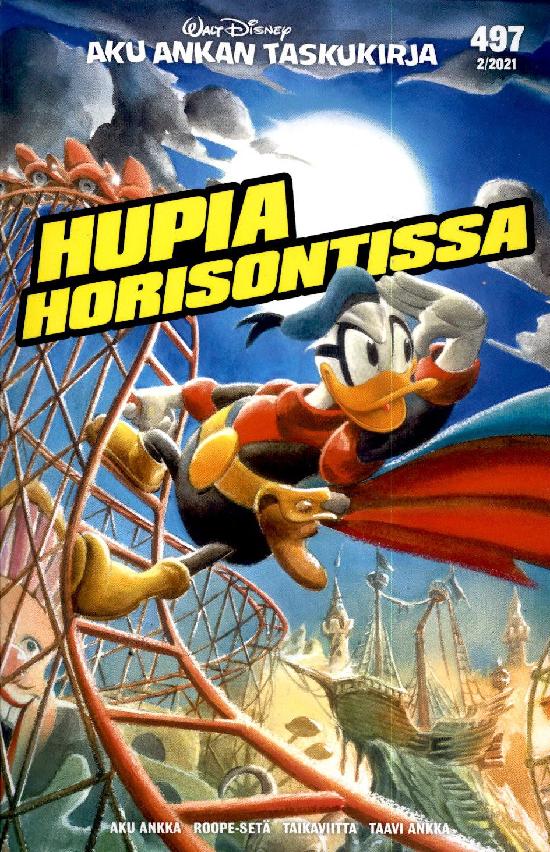
Hupia horisontissa
2021
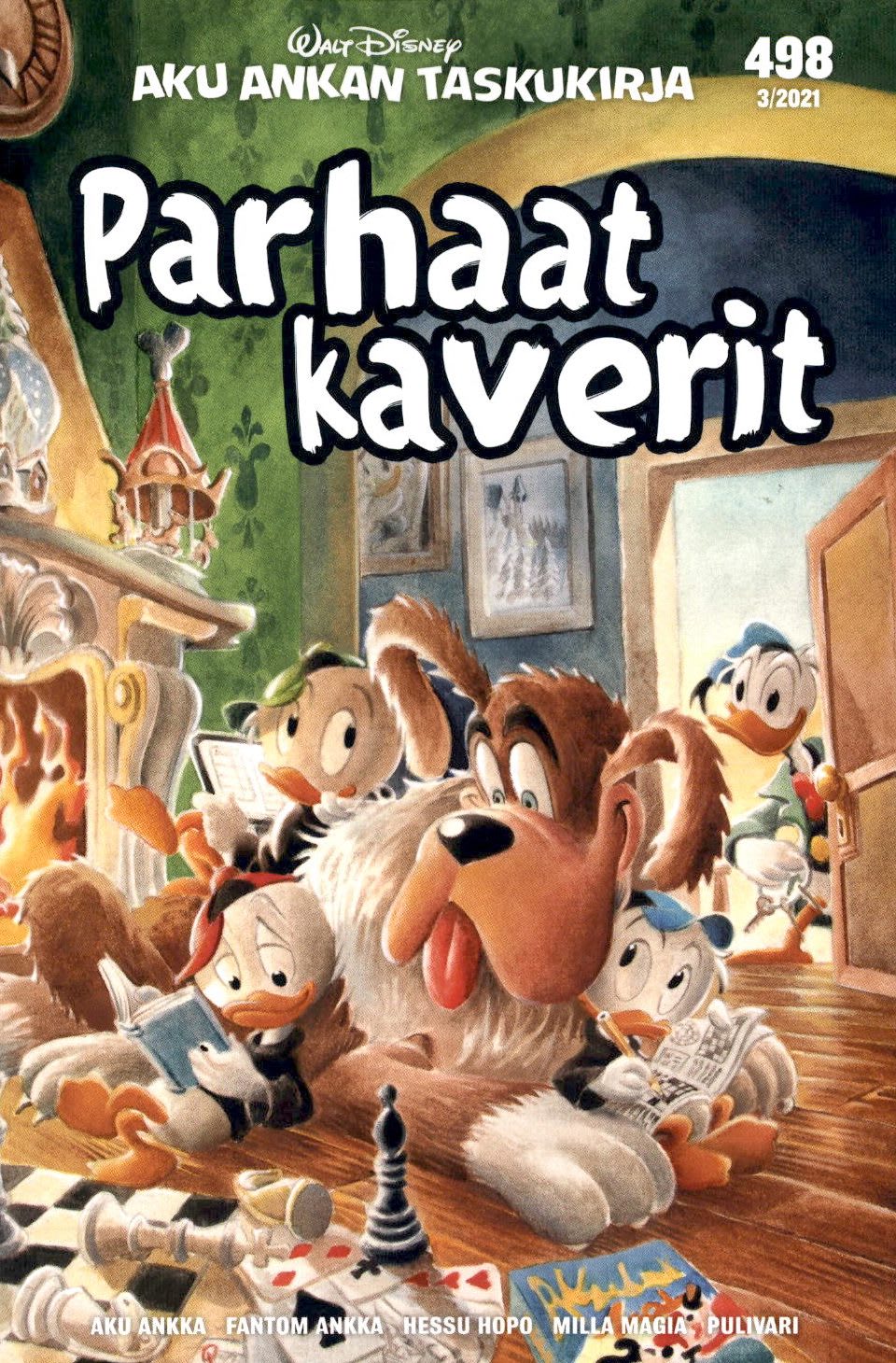
Parhaat kaverit
2021
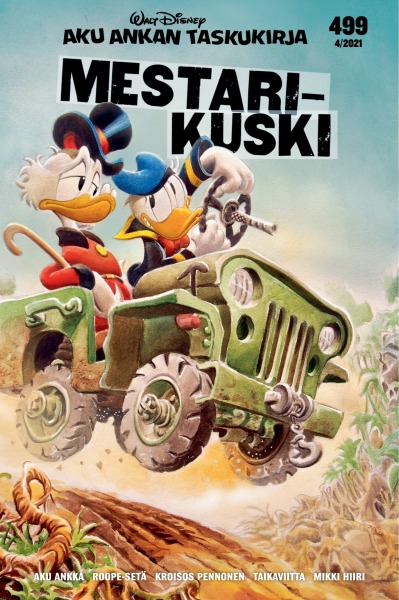
Mestarikuski
2021

500 viissatanen
2021
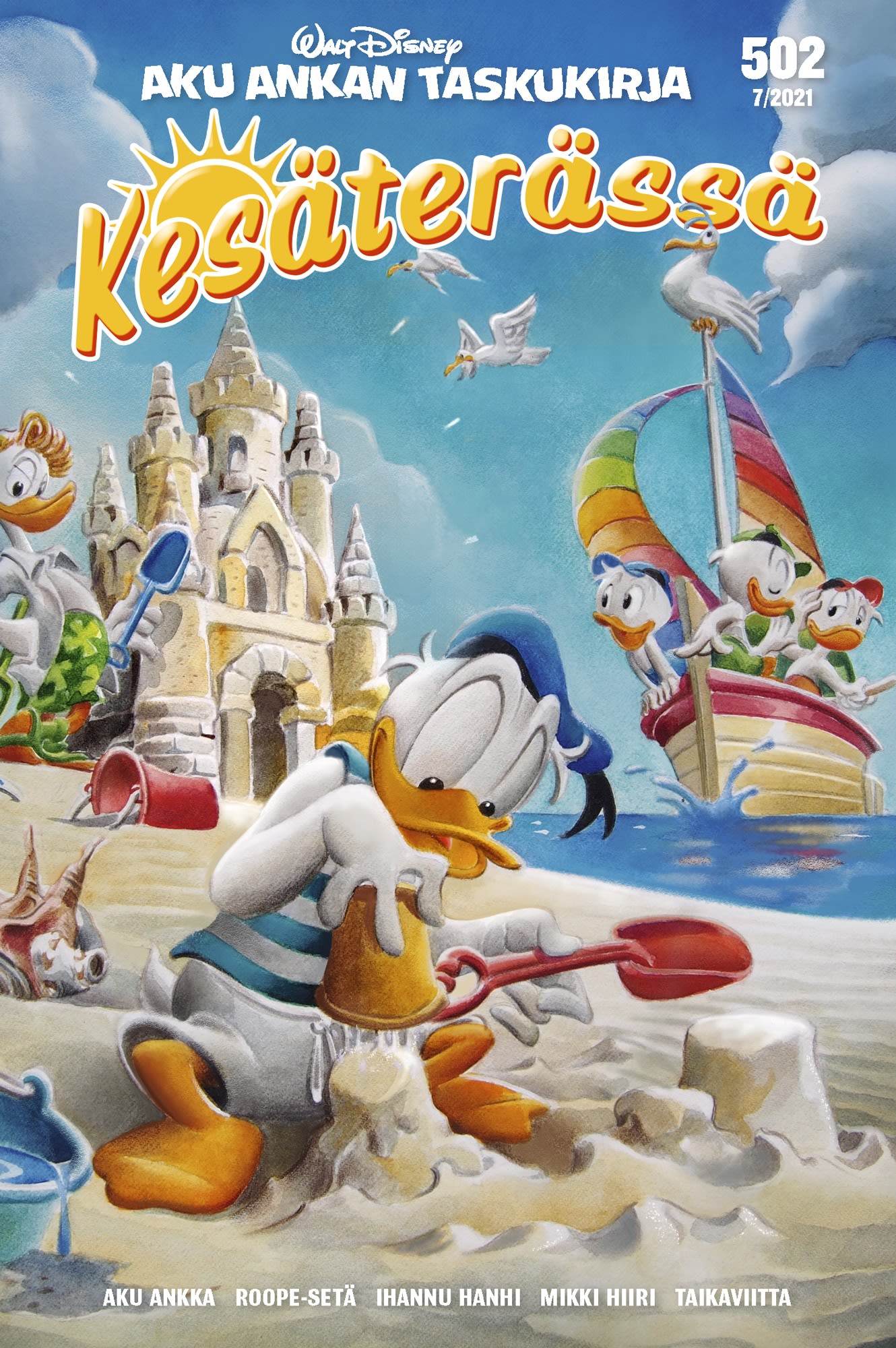
Kesäterässä
2021
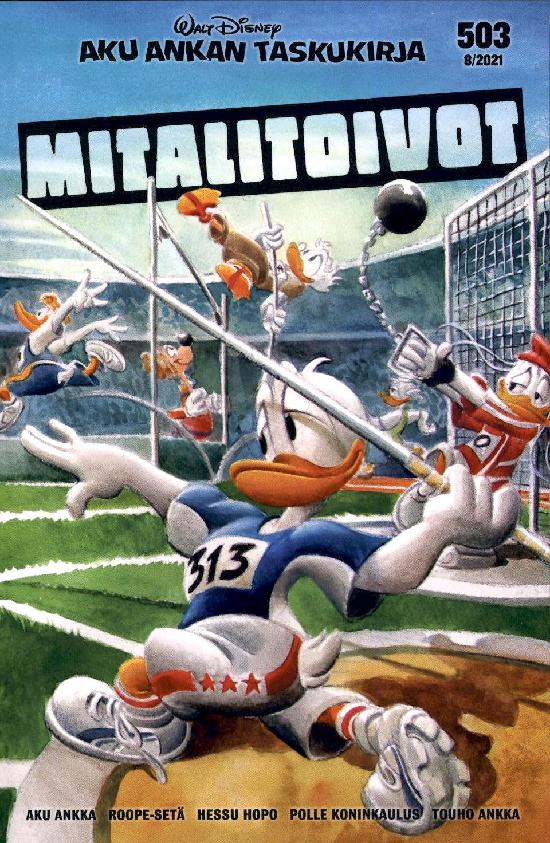
Mitalitoivot
2021
Authors

Carl Barks (March 27, 1901 – August 25, 2000) was an American Disney Studio illustrator and comic book creator, who invented Duckburg and many of its inhabitants, such as Scrooge McDuck (1947), Gladstone Gander (1948), the Beagle Boys (1951), The Junior Woodchucks (1951), Gyro Gearloose (1952), Cornelius Coot (1952), Flintheart Glomgold (1956), John D. Rockerduck (1961) and Magica De Spell (1961). The quality of his scripts and drawings earned him the nicknames "The Duck Man" and "The Good Duck Artist". People who work for Disney generally do so in relative anonymity; the stories only carry Walt Disney's name and (sometimes) a short identification number. Prior to 1960, the creator of these stories remained a mystery to his readers. However, many readers recognized Barks' work and drawing style, and began to call him the Good Duck Artist, a label which stuck even after his true identity was discovered by John and Bill Spicer in 1959. After Barks received a 1960 visit from Bill and John Spicer and Ron Leonard, he was no longer anonymous, as his name soon became known to his readers. Writer-artist Will Eisner called him "the Hans Christian Andersen of comic books." In 1987, Barks was one of the three inaugural inductees of the Will Eisner Comic Book Hall of Fame. (From wikipedia)


Tito Faraci (born Luca Faraci, on 23 May 1965) is an Italian comics writer and editor, as well as novelist. Faraci is most notably known for his work on Mickey Mouse, as published on 'Topolino', the Italian weekly digest devoted to Disney comics. Faraci debuted in comics in the middle of the nineties. Although his very first script was for a Donald Duck story, he quickly gained fame as an inventive and innovative Mickey Mouse writer. His Disney stories mix absurd humour and a deep human touch, while borrowing atmospheres from pulp movies and noir literature. Many of his stories have been drawn by famous artist Giorgio Cavazzano. The two have also collaborated outside of Disney, for instance on a Marvel's Spider-Man one-shot. Faraci is nowadays a veteran comic book writer, having wrote for years for a number of mainstream Italian series, most notably Tex and Diabolik. His first novel, titled La vita in generale, appeared in 2015. Italian bio: Tito Faraci è nato a Gallarate nel 1965. È uno dei più importanti sceneggiatori italiani di fumetti. Ha creato storie per “Topolino” (Giorgio Cavazzano è stato – come usa dire lui stesso – il suo mentore), “Dylan Dog”, “Tex”, “Diabolik”, “Magico Vento”, tra gli altri, ed è stato uno dei primi scrittori italiani a lavorare anche per personaggi di fumetti americani come Spider-Man, Devil e Capitan America. Per la Disney ha sceneggiato Novecento di Alessandro Baricco, dando al protagonista la fisionomia di Pippo. Per Feltrinelli ha pubblicato il romanzo La vita in generale (2015), la sceneggiatura dell’albo a fumetti Le entusiasmanti avventure di Max Middlestone e del suo cane alto trecento metri (con Sio; 2016; nuova edizione: 2018), Il pesce di lana e altre storie abbastanza belle (alcune anche molto belle, non tante, solo alcune) di Maryjane J. Jayne (con Sio; 2018) e, nella collana Feltrinelli Comics, la graphic novel di Alessandro Baricco, Senza sangue (2019; con Francesco Ripoli).

Cartoonist. An engineering graduate, he started writing comics since high school. He began his career as a screenwriter when he met an older two-year-old illustrator, Giorgio Cavazzano, who needed someone who could help him emerge as an independent artist. Pezzin began collaborating with Arnoldo Mondadori Editore, for which the Pezzin-Cavazzano duo produced numerous stories published both on Almanacco Topolino and on other Disney magazines. But Pezzin didn't just write Disney stories. Assisted by Cavazzano for the drawings, Pezzin wrote the texts of the series (created by him) Walkie and Talkie, Oscar and Tango, Smalto and Jonnhy and Captain Rogers. Later the duo separated and Pezzin, always continuing to work for Mondadori, also wrote comic stories for Bonelli like some by Zagor and several by Il piccolo ranger. After the comic book Topolino passes from Mondadori to Disney Italia, Pezzin starts dedicating itself almost exclusively to Disney characters, creating stories for various magazines such as Paperinik, Minni & company etc. With the designer Massimo De Vita he has designed numerous successful Disney comic sagas such as Once Upon a Time ... in America, The Lords of the Galaxy, the Adventures of Tops de Tops and the Time Machine Saga. He also scripted stories for younger children like those of Cip and Ciop and the Little Mermaid. In recent years Pezzin has stopped collaborating with Disney and has dedicated himself to the scripts of the Winx comic stories, published on the Winx Club.


Stefan Petrucha (born January 27, 1959) is an American writer for adults and young adults. He has written graphic novels in the The X-Files and Nancy Drew series, as well as science fiction and horror. Born in the Bronx, he has spent time in the big city and the suburbs, and now lives in western Massachusetts with his wife, fellow writer Sarah Kinney, and their daughters. At times he has been a tech writer, an educational writer, a public relations writer and an editor for trade journals, but his preference is for fiction in all its forms.
William Crozier Walsh was a film producer, screenwriter and comics writer who primarily worked on live-action films for Walt Disney Productions. (source: Wikipedia)
Guido Martina was an Italian comic writer, documentarist and author. (source: English Wikipedia) Guido Martina è stato un fumettista italiano, primo e fra i principali autori di storie a fumetti Disney del secondo dopoguerra, arrivando a scriverne oltre un migliaio, e capostipite della scuola Disney italiana; fu l'inventore delle Parodie Disney (fonte: Wikipedia in italiano)
È stato un fumettista italiano. https://it.wikipedia.org/wiki/Giorgio... Was an Italian comic writer and illustrator.

Note: The decision was made to consolidate all Disney publications under the name Walt Disney Company. This profile is for Walt Disney, the characters he created, and the company he founded. Any questions, please ask in the Librarian's Group. Walter Elias “Walt” Disney (December 5, 1901 – December 15, 1966) was an American film producer, director, screenwriter, voice actor, animator, entrepreneur, entertainer, international icon, and philanthropist. Disney is famous for his influence in the field of entertainment during the 20th century. As the co-founder (with his brother Roy O. Disney) of Walt Disney Productions, Disney became one of the best-known motion picture producers in the world. The corporation he co-founded, now known as The Walt Disney Company, today has annual revenues of approximately U.S. $35 billion. Disney is particularly noted for being a film producer and a popular showman, as well as an innovator in animation and theme park design. He and his staff created some of the world's most famous fictional characters including Mickey Mouse, a character for which Disney himself was the original voice. He has been awarded four honorary Academy Awards and has won twenty-two competitive Academy Awards out of fifty-nine nominations, including a record four in one year, giving him more awards and nominations than any other individual. He also won seven Emmy Awards. He is the namesake for Disneyland and Walt Disney World Resort theme parks in the United States, as well as the international resorts Tokyo Disney, Disneyland Paris, and Disneyland Hong Kong. Disney died of lung cancer in Burbank, California, on December 15, 1966. The following year, construction began on Walt Disney World Resort in Florida. His brother Roy Disney inaugurated the Magic Kingdom on October 1, 1971. The Walt Disney Company (NYSE: DIS) (commonly referred to as Disney) is the largest media and entertainment conglomerate in the world in terms of revenue. Founded on October 16, 1923, by brothers Walt Disney and Roy Disney as the Disney Brothers Cartoon Studio, the company was reincorporated as Walt Disney Productions in 1929. Walt Disney Productions established itself as a leader in the American animation industry before diversifying into live-action film production, television, and travel. Taking on its current name in 1986, The Walt Disney Company expanded its existing operations and also started divisions focused upon theatre, radio, publishing, and online media. In addition, it has created new divisions of the company in order to market more mature content than it typically associates with its flagship family-oriented brands. The company is best known for the products of its film studio, the Walt Disney Motion Pictures Group, today one of the largest and best-known studios in Hollywood. Disney also owns and operates the ABC broadcast television network; cable television networks such as Disney Channel, ESPN, and ABC Family; publishing, merchandising, and theatre divisions; and owns and licenses 11 theme parks around the world. On January 23, 2006, it was announced that Disney would purchase Pixar in an all-stock transaction worth $7.4 billion. The deal was finalized on May 5. On December 31, 2009, Disney Company acquired the Marvel Entertainment, Inc. for $4.24 billion. The company has been a component of the Dow Jones Industrial Average since May 6, 1991. An early and well-known cartoon creation of the company, Mickey Mouse, is the official mascot of The Walt Disney Company. —from Wikipedia


Pat McGreal was a prolific writer of Disney Comics for the Egmont Company overseas, much of it later republished in this country. His non-Disney work included three graphic novels for DC/Vertigo: Chiaroscro; The Private Lives of Leonardo DaVinci, Veils and I, Paparazzi. Among the comic books he wrote for were Captain Marvel, Tarzan, The Simpsons, Judge Dredd, The Flash, Justice League, Indiana Jones, Martian Manhunter and Fighting American. He was an Eisner Award nominee and a past president of the Comic Art Professonal Society.

Francesco Artibani (born 27 October 1968) is an Italian comics writer, most notably known for his work on Disney comics. Artibani originally studied animation. He debuted in comics in 1992, scripting an Uncle Scrooge story for the Italian weekly Disney comics magazine 'Topolino'. Besides writing stories for Topolino, since the 90's Artibani contributed to various innovative comic projects from Disney Italia, such as PKNA, MMMM and W.I.T.C.H. He is also the co-creator of the Monster Allergy comics series.

Luciano Bottaro (born 16 November 1931, died 25 November 2006) was an Italian cartoonist, particularly known for his work on Disney comics. Bottaro's comics had a simple and angular art style and often abounded with surreal tone. His works have been published in a number of European and South American countries. Some of his Disney duck stories have only recently appeared in North America, through the publisher Fantagraphics. Bottaro was born and lived most of his life in Rapallo, a small town on the shores of the Italian region of Liguria. His collaborators and pupils from the Bierreci studio - which he founded in 1968 - are sometimes referred to as the 'Rapallo school' of Italian cartoonists. Bottaro began working for the Disney production in 1951. This makes him a member of the first generation of Italian (and European) Disney cartoonists, alongside the likes of Giovan Battista Carpi and Romano Scarpa, and almost a contemporary of the American (back then anonymous) master Carl Barks. Bottaro illustrated Disney comics, especially featuring Goofy, Donald Duck and Uncle Scrooge, till the middle of 80's. Many of his stories were co-created with writer Carlo Chendi, another founding member of the 'Rapallo school'. Outside of Disney, Bottaro worked a lot for the French publisher Alpe, for which he created Pepito, his most famous original character. Pepito got its own magazine in 1954, also featuring other Bottaro's series, such as Saturnino and I Postorici.


